Maria Teresa:




Our Group’s strategy and positioning are evolving. Builders Group was known for its insurance expertise and an excellent AM-Best rating. With the start of the new Stonefort era, the Group, building on its proven in-depth experience in risk management, will provide integrated tailor-made services. These services are provided as a one-stop-shop in what we call “B2Bespoke” insurance solutions. Lean and agile, but big in scope with real human values that respond to our clients’ expectations, Stonefort Group is a strong and reliable partner when your needs require a deeper commitment.

The Democratic Party’s two big hitters in government, prime minister Xavier Bettel and finance minister Yuriko Backes, addressed parliament in keynote speeches on successive days in the second week of October. The significance of the timing of Bettel’s State of the Nation speech and Backes’ unveiling of the 2023 draft budget, almost exactly one year before the next parliamentary elections, was not lost on political commentators or MPs.
Bettel’s speech on 11 October in particular felt more like a party political broadcast than the bold statement of intent he had delivered in 2021, when he laid out a vision of how the grand duchy would slowly emerge from the economic impact of the covid pandemic. The caveat is that much of what Bettel said about the government’s strategy to weather the latest crisis had already been addressed in his presentation of the tripartite agreement less than two weeks earlier. And any new revelations regarding fiscal policy and public spending were on hold until Backes delivered her budget plans the following day.
Still, what some opposition party MPs called an “interminable” listing of the government’s achievements was clearly supposed to lay the groundwork for next year’s election campaign. The parties are all under starter’s orders, to use horse racing terminology, even if the official campaigning is still some 10 months away.
If Bettel was uninspiring, Backes was also cautious in the extreme as she outlined a budget that she said avoided taking “ill-advised risks”. She argued that now was not the time for major tax reforms, especially
when the government had spent some €5.5bn on helping individuals and businesses since the start of the covid pandemic in the spring of 2020. Maintaining that precious triple-A credit rating seems to be what the DP, which has held the finance ministry portfolio since 2013, is all about.
That may play well with Luxembourg’s financial services sector, whose contribution to the economy is vital, but that is not where the majority of the electorate (at least those eligible to cast their vote in the parliamentary election) works.
So how will those Luxembourg voters who are employed by the state or work in industry or the service sector react to the government’s failure to deliver on tax reform? The LSAP, anticipating the content of the Bettel and Backes speeches, had already called for a reform that it said would result in “tax justice in favour of greater equity.” Déi Gréng, on the other hand, had prefaced the budget announcement with an appeal for Backes to stick with an “active investment policy” and eschew any temptation to install a policy of austerity.
The government parties, then, are already jockeying for position. When the race begins, expect the runners and riders to employ any means necessary to gain an advantage.

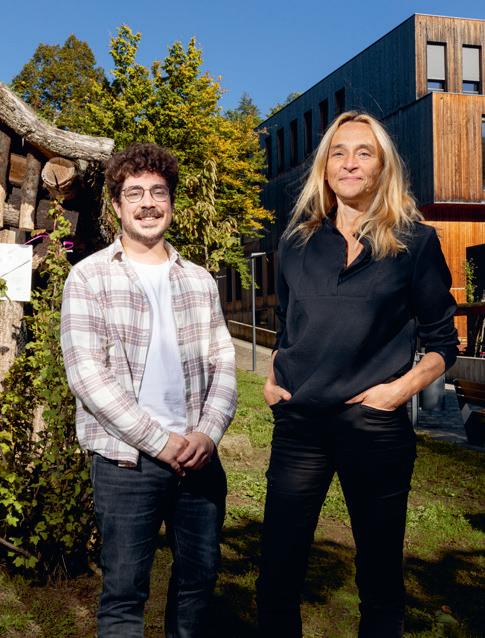
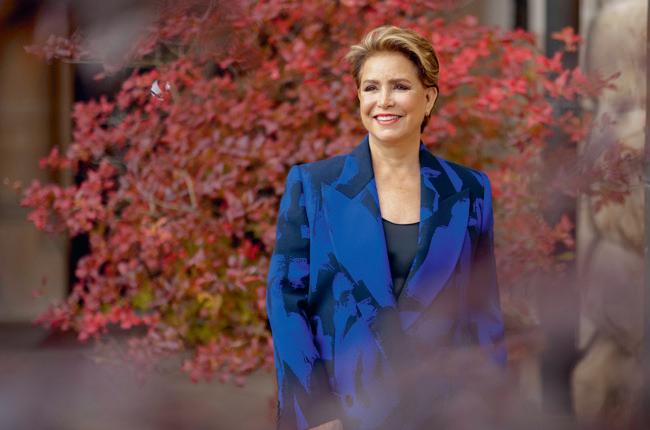


45-year-old hospitality sector entrepreneur Gabriel Boisante has been selected alongside 29-year-old Maxime Miltgen to head the LSAP list for next June’s municipal elections in Luxembourg City.

It is unusual for an entrepreneur in the hospitality business to stand for election. What motivated you to become politically active?
It’s not just since I have been engaged in the LSAP that politics has been a real topic of interest. But it became very concrete six years ago, when I saw the state of the of the Gare neighbourhood. I think that hospitality, like retail, like service, can have a big impact on the life of a community, on the DNA of a neighbourhood, and, on a bigger scale, of the city.
We have a social role to play. Our group has 250 employees. A lot of those are foreigners, are single mothers, are unqualified and don’t speak French or Luxembourgish or German.
So what is the future for those people when the employment market puts up barriers to entry? Unqualified jobs, like in hospitality, are a stepping-stone for them to join society, to be able to get social coverage, to have access to housing.
So the LSAP was a natural fit?
Yes, because my heart has always been more on the left, rather than liberal and capitalistic, even though as an entrepreneur that can sound weird. But being a catalyst to help people on the margins and having a social heart is quite normal in the hospitality sector.
By not sleeping much. It requires a lot of organisation and discipline, because I am also a father of three. But the work-life balance is very fine. My work is my life, and my life is my work. This can also define an entrepreneur who is led by ambition. The ambition of my work as an entrepreneur is to be as fair as I can to my co-workers, to be as appreciated as possible by my clients, to be proud of the work that I do, and that my kids are proud of who I am.
In terms of political ambition, it is to serve an idea. I don't think that the political journey should be a question of ego, of personal status. I don't
need this. I’m busy enough. I'm doing this because I really think that our ideas could have a very positive impact on the attractivity of the city and the way it functions, and on the community.
If you are elected to the college of aldermen or as mayor, is there not a risk of conflict of interest when tackling some dossiers? We're running this race because we believe in our chances to succeed, to convince people that it's time for a change in Luxembourg City. Of course, there is a conflict of interest. You cannot be an entrepreneur active in the private sector and be a mayor. I would have to split these activities, detach myself completely operationally, and I'm ready to do that. It's part of the game.
But the LSAP has historically under-performed in Luxembourg City… Absolutely. In the last years, we haven't been represented in the city as we should be. We are the party with the second largest number of votes nationally, we have the leading politicians in the Politbarometer [popularity poll] top 10, yet we are the fourth party in the capital. It makes no sense. Maybe the wording, the way we expose our ideas, hasn’t worked as it should have in the city.
But now the five-year residency clause for foreigners to vote has been dropped. That is a big change because we are a modern city with over 60% foreigners. These people should vote because their concerns are my concerns. Housing, public school, transportation, services, accessibility… those issues alone should be sufficient reason for foreigners to vote.

CEO of the newly inaugurated Luxembourg House of Cybersecurity (formerly Security Made in Lëtzebuerg), Pascal Steichen explains the challenges small- and medium-sized enterprises face when it comes to protecting their data.
What are the top three challenges SMEs face in terms of cybersecurity?
The top three challenges for SMEs are quite similar for all companies, to be honest. First of all, so-called ransomware attacks, which is a way criminals take your data, or take the data of the company, and ask for money to get it back… Especially for small companies, they probably have less backing to resist such an attack. If you want to get back the data, you want to be able to decrypt it again.
The second is all of these phishing emails that we get. Especially what we have seen in the last year is the way those email messages are written or constructed--the topics that they use are mostly, let’s say, crisis-related, related to topics that are in the media, that everybody’s talking about to get attention easier… Smaller companies are often better protected because they are small; the employees know each other.
The third big trend is linked to data in general--data breaches, but also abuse of data in the sense that with the digital world, everything’s in digital form... People use social networks, and all of this data, information, about how companies work, who knows who-all this information basically is being used by criminals to prepare different attacks… We see that criminals are really using that massively… especially as we are going into this artificial intelligence era, the manipulation of this data is getting even easier and more automatic. It’s not an enormous concern yet today, but this is clearly something we from the cybersecurity sector see as a trend coming.
A recent study [shows] that every 11 seconds, there is a ransomware attack. Globally, there’s an estimation that it costs the economy $20bn [in one year].
Especially from the European Commission side, also from us or other continents, there are a lot of new regulations, recommendations, etc.,
being produced the last few years, and many are still in the pipeline because there needs to

Are certain sectors or individuals more at risk than others, generally speaking?
Cyber criminality is really opportunity based… As soon as [the criminals] get access, they can ask for money… So a small company will have lower income than a big company, so they’re clearly doing the homework in that sense…
Then there is a little percentage of activity that’s backed by governments, or I would say by organised crime… it’s really linked mostly to
Are SMEs normally equipped to properly report data breaches?
I would say there has been a quite positive evolution in reporting, especially in countries and regions where the data protection organisations or agencies try to [give] more guidance--trying to do a lot of awareness-raising, to even sometimes develop tools or have documentation to describe how things can be protected and also on reporting when there is a breach. I’ve never seen a case which was not international, or which was [only] local, focusing on one individual. The results always have collateral damage… so it’s very important to share information about cyberattacks, what happens, how it happens, how to be better protected, what one can do in such a case… Reporting comes into this general informationsharing concept. It’s a positive evolution we see,
The Association of the Luxembourg Fund Industry holds its Swiss roadshow on 8-9 November. One of the speakers, Silke Bernard, global head of the investment funds practice at the law firm Linklaters, says Swiss links are going strong.
Switzerland has historically been a really important market for the Luxembourg funds industry. What’s your assessment of the Swiss market today?
I think the Swiss market is still a very important one for the Luxembourg fund industry, both on the sponsor side and on the investor side. I’m working for a large number of fund sponsors which are using Luxembourg as the gateway to the world, actually. You can very nicely combine Swiss investors, institutional, but also high net worth, with Luxembourg vehicles and go into Europe and the rest of the world. That works pretty well. What may have shifted a little bit is from the traditional Ucits business to now expanding into alternatives. We have many Swiss actors going into the alternative space, including some of the ex-Cayman fund sponsors now using Luxembourg structures, because they work just as well.
And it’s an onshore jurisdiction?
Yes, so it is better received by some investors. Others just look at the content and say, ‘Okay, that’s pretty much like Cayman, so fine with me.’
Have there been any important regulatory changes?
Well, I think the point that is creating a little bit of a headache is the new marketing rules in Switzerland. There have been changes in the Swiss legislation and there’s also a template distribution agreement, and so on. So that adds a little bit of workload, which is actually not a bad thing, because we are collaborating more closely with our Swiss colleagues.
Have you seen a big shift in fund players?
Or is it the same companies that have always been interested in Luxembourg that are still interested?
It’s the same players, adding [new funds]. What is changing in line with international development is a lot of interest in retailisation
or democratisation [of access to private market funds].
Is retailisation bringing a lot of new business to Luxembourg?
Yeah, definitely. There’s a lot of appetite [for European Long-Term Investment Funds, Eltifs].
I have my entire team working on it. We have something like 15 or so Eltifs in preparation, which is massive, if you see that there are only something like 80 or so approved [in the EU]. That is just a massive number.
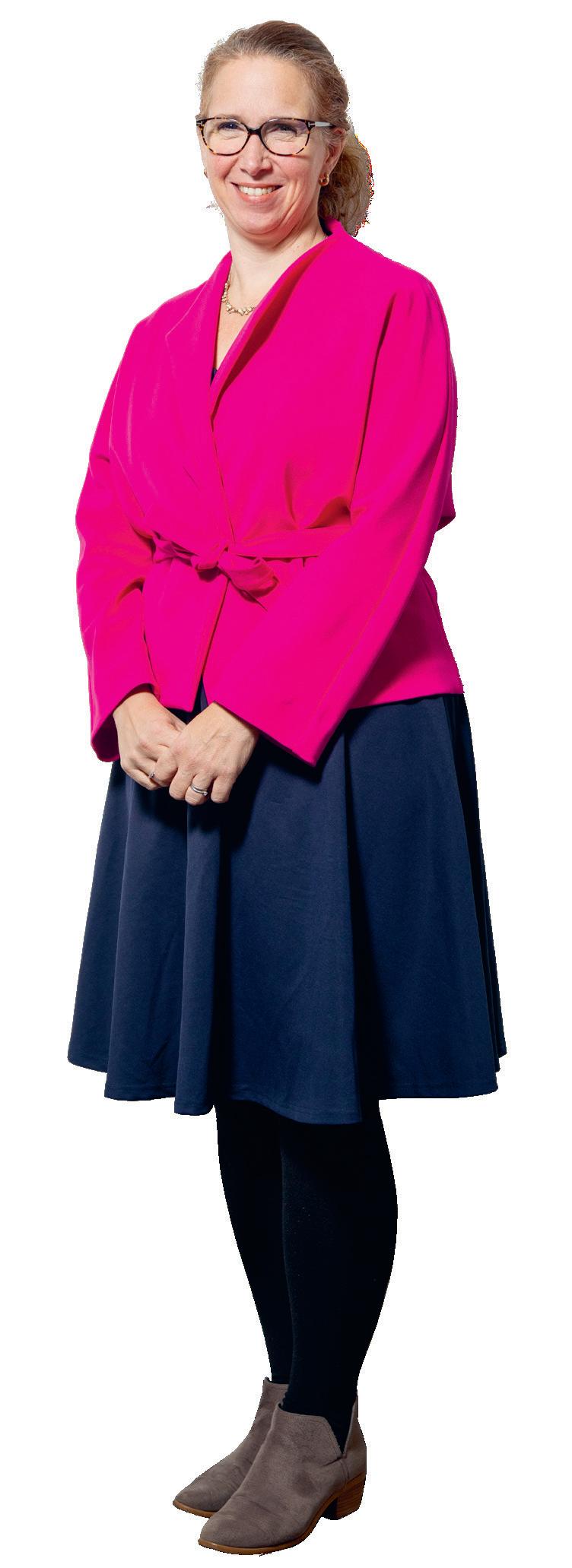
Is ESG a roadblock for Swiss fund firms?
ESG is rather seen as an opportunity for many Swiss players because they’re by nature very ESG friendly, very close to nature. So ESG is not a problem, it’s rather an opportunity. And many Swiss players really like being in that field. So, no.
What are the most important topics for this year’s Alfi roadshow in Switzerland?
I think the two topics that are really important right now are retailisation and ESG. Those are the two main things that everybody’s talking about, and everybody needs to talk about, because that is where real opportunities lie. And also some threats.
By threats, you mean people not moving fast enough?
By threats, I mean, to get it wrong, to do greenwashing without attempting to do so or to disclose what you’re doing in words that can be easily misunderstood. And suddenly you end up with some investor complaint or consumer protection organisations saying you have sold something different from what you’re doing. [Even] if you were [acting] in good faith, it was just misunderstood. That’s very easy and a big threat.
main sponsor of

A booth dedicated to NFTs and a first-ever Lëtzebuerger Konschtpräis award will undoubtedly spice up the programme of the Luxembourg Art Week this year. Art fair director Leslie de Canchy shares more.
The Luxembourg Art Week is very international in its scope, with a huge presence of international galleries. What does this event represent to the art world?
Like every art fair, it’s an excellent tool to promote national art and culture. The presence of international galleries allows the public [access to] numerous artworks from around the world in one place at one time.
Nowadays, it has become a not-to-bemissed occasion to meet all the local and international art market professionals, including art critics, curators, museum directors, artists and, of course, the galleries.
In this way, I think the Luxembourg Art Week filled the gap in the last seven years regarding other countries with their art fairs. Due to the large number of international applications, the new selection committee this year decided to favour international exhibitors and thus increase the visibility of the fair.
Non-fungible tokens [NFTs] will make up a new category of works for the first time during the fair. What’s the story behind this?
The AW3D, a virtual tour through the art fair, launched in 2020 in response to the pandemic. Luxembourg Art Week pursues its ambition this year to bring the latest trends in contemporary arts and digitalisation to Luxembourg.
While the art market is more concerned by NFTs and the metaverse--drawing a range of new collectors further interested in technologies and cryptocurrencies in its wake--it was essential for the fair to include it in this year’s programming.
Even if Luxembourg gathers a lot of NFT enthusiasts and [has] events from various sectors, a curated art booth devoted to the topic was still missing... We are looking forward to presenting this new booth within the ‘Take Off’ section to
inform and educate our visitors and exhibitors about NFTs and blockchain art practices.
How many exhibitors and guests are you set to welcome this year? How many are new exhibitors?
In the beginning, we had about 7,000 visitors. We more than doubled in the last seven years and had about 15,000 visitors last year. We plan to welcome about 17,000 visitors from Luxembourg and abroad for this new edition.
We have 30 first-time participating galleries this year, which is good, and they complement the 50 exhibitors that renew their participation. The size of the fair will stay at about 80 exhibitors because it is the ideal format according to the venue, the public and our local art market.
What’s the new Konschtpräis about, and what’s the selection process?

The Lëtzebuerger Konschtpräis is a new national award for the visual arts. Endowed with €10,000, this biennial prize aims to distinguish an artist for their life’s work.
So it’s not for emerging artists but really something [to recognise the long-term] career commitment to the artistic scene in Luxembourg.
[It] is open to artists active in the field of visual arts, who are of Luxembourgish nationality, or living and working in Luxembourg, and have strong cultural connections with the country’s art scene.
A jury made up of five widely recognised experts in the field of visual arts was appointed by the minister of culture. The first [ever] award ceremony will take place on 11 November*, just before the opening of the art week.

Ten, even five years ago, most businesses and financial institutions would have viewed sustainability as a box-ticking exercise. If there were a corporate social responsibility department in place, it would have sat apart from the rest of the organisation’s activities, with the exception of compliance and marketing.

Not so in the present day. Sustainability is now rightly viewed as an essential part of any organisation’s day-to-day functioning, with the sustainability officer occupying a C-suite position alongside the chief operating officer and chief risk officer. The interaction with compliance is still there, but now there is a necessary absorption into lending decisions, risk management, human resources, finance, legal, front office and operations. Banks and other financial institutions are in no doubt that sustainability walks hand in hand with financial performance, and a lack of sustainability places undue financial risk upon a business. Luxembourg itself has long encouraged private investment in sustainable assets through a number of innovative vehicles, most notably the Luxembourg Green Exchange. In time, I hope we have the luxury of seeing sustainability evolve beyond climate and into a strong focus on the other United Nations sustainable development goals.
Words JOSEPHINE SHILLITOAs more businesses in Luxembourg employ a sustainability officer, Delano looks at the scope and challenges of making businesses more sustainable and what sustainable finance initiatives the grand duchy offers.
What are your goals as a sustainability officer?
My role is to coordinate the ABBL’s efforts to help its members understand the applicable regulatory frameworks and to integrate sustainability in their business models. I am also charged with implementing our own CSR policy within our organisation. I also strive to raise awareness of younger generations on their role as future investors through the ABBL’s various initiatives on responsible finance.
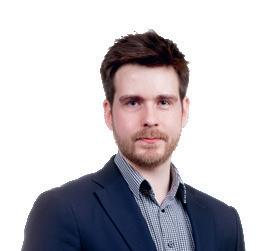
It is crucial to understand the rapidly evolving regulatory landscape of corporate sustainability to properly represent our members’ interests. This requires gathering the right experts within our membership to ensure Luxembourg maintains its leading role in sustainable finance. We have therefore created a committee and working groups covering both the strategic and the operational concerns that banks face in their own transition.
I rarely have a day similar to the one before. My daily work aims to deliver added value to our members by providing clarifications, advice and drafting guidelines. The current energy crisis is a good example, as I’m actively working with our members to help them contribute to collective efforts by reducing their own energy consumption.
Some two and a half years after launching the Stand Speak Rise Up! platform at an international forum hosted in Luxembourg, Grand Duchess Maria Teresa is still hard at work raising awareness and providing concrete help to the victims of sexual violence as a weapon of war.
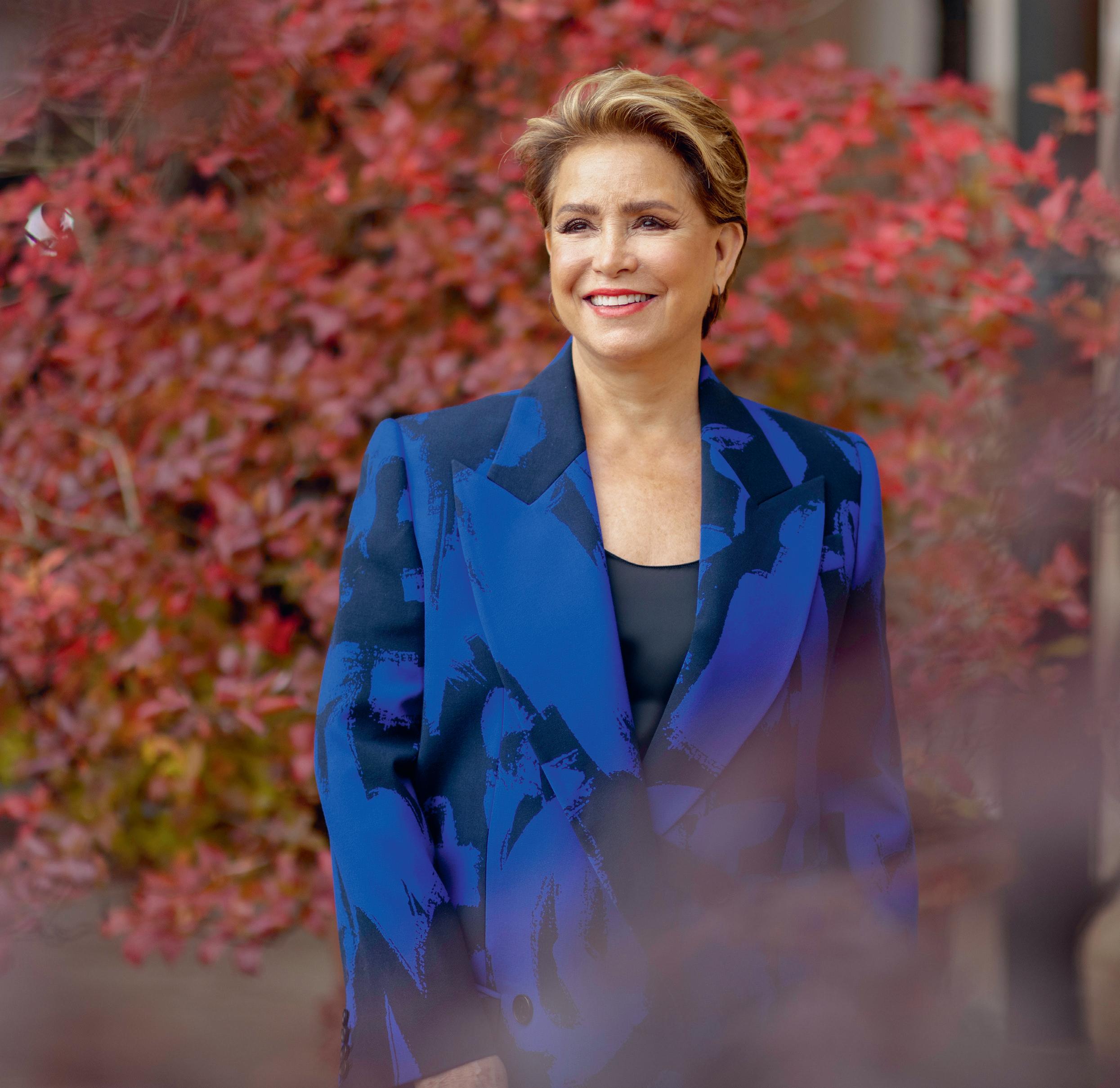
“It is Luxembourg that I am exporting,” says Grand Duchess Maria Teresa of Stand Speak Rise Up!Grand Duchess Maria Teresa
The elegant setting of her favourite room in the Château de Berg may seem far removed from the subject being addressed, but Grand Duchess Maria Teresa speaks with serene clarity and sometimes fer vent passion about her efforts to bring to the world’s attention crimes against humanity that for too long have been ignored.
Some two and a half years after it was launched, the Stand Speak Rise Up! plat form has not only raised awareness but also proven to be of vital help to the vic tims of sexual violence as a weapon of war in conflict zones and fragile envi ronments. Indeed, the château has spe cial memories for the grand duchess in the context of the first forum she hosted in Luxembourg in 2019. Ahead of a gala event to raise awareness and funds, the grand duchess recalls getting to know 50 survivors she had invited to Luxembourg for the launch event. They had spent a week in the grand duchy and that included a visit to the château. “It was important for me to know them, and for them to know me before this big event started, so that they would feel, with the horrors that they’ve gone through, as comforta ble as possible,” the grand duchess explains.
Beautiful resilience
“I was very grateful when they started really confiding in me and doing what they never do. They do not cry in front of people that they do not know. And they do not tell their story. And each one of them told their story. We cried together. We were in each other’s arms really sob bing. At the same time, they have such resilience that we even ended up singing
together. It was extraordinary, one of the most beautiful experiences of my life.”
That moment is testimony to the com mitment and personal engagement that Grand Duchess Maria Teresa has for the Stand Speak Rise Up! cause. She has long been a champion of women’s and chil dren’s rights and has committed to social and humanitarian issues. Back in 2019, she explained that this stemmed from reading a lot about social engagement as a young girl. “Little by little, it became evident that it was what I wanted to do later on,” she said at the time. When decid ing what to study at university, she chose political sciences over law because she wanted a wider view of the geopolitical situation of the world. “So that maybe I would have more tools to defend those who cannot defend themselves.”
The inspiration to establish the plat form came after hearing Nobel Peace Prize winner Dr Denis Mukwege speak at a conference.
Mukwege is a renowned gynaecolog ical surgeon as well as the founder and medical director of Panzi Hospital in Bukavu in the Democratic Republic of the Congo. He is recognised as the world’s leading expert on “repairing” the inter nal physical damage caused by rape. Together with his team, he has treated more than 50,000 victims in east Congo. In 2018, he received the Nobel Peace Prize, with Yazidi activist and rape sur vivor Nadia Murad, for his efforts to end the use of sexual violence as a weapon of war and in armed conflict.
The use of violence against women in war is a problem as old as history, the grand duchess has previously stated. But the scale is now worldwide, and that is what is frightening. “We are not only talking about war, but we are also talking about situations where there are guerril las, situations in refugee camps.”
Impressed by his work, the grand duch ess later invited Mukwege to meet with her. “I was very moved by the stories of the victims, the horror of what was going on. I asked what can I, in my position, do to help you?” Mukwege’s answer was simple and effective, and proved to be a vital catalyst for what was to follow. “He said, ‘Well, these women need some one who can give them a platform.’ So we gave them a voice, we put the victims
centre stage, which is not something that is usual at international meetings of this scale.”
What the victims said was shocking and broke taboos. As the grand duchess relates, they said that one of the major problems that nobody was addressing was the children born of rape during conflicts. “We put them on the map, thanks to the survivors,” she says now. “It is a topic that neither the United Nations nor anyone else had really addressed.”
Indeed, the grand duchess says she is “very proud” that the UN Security Coun cil in 2019 passed a “landmark” resolu tion--number 2467--that strengthens justice and accountability, and calls for a survivor-centred approach in the pre vention and response to conflict-related sexual violence.
Crucially, Resolution 2467 also calls for “the provision of reparations for sur vivors as well as livelihood support to enable them to rebuild their lives and support their families, including the chil dren born of sexual violence in conflict who are also stigmatised and suffer in silence and shame, often stateless, and acutely vulnerable to recruitment and radicalisation by armed groups.”
The adaptation of the resolution was down to the tireless work of the UN spe cial representative on sexual violence in conflict, Pramila Patten (see page 21).
More recently, in July this year, a court in Bosnia and Herzegovina took the first significant step to grant children born of rape in war legal recognition within the newly adopted law on civilian victims of war. Today, there are between 2,000 and 4,000 children born out of that war.
That case was fought by innovative legal group Trial International, jointly with the association Forgotten Children of the War. Philip Grant, executive direc tor of Trial International, is one of the scientific committee members of Stand Speak Rise Up!. “Giving the means to these women to have access to trusted international lawyers who know specif ically this problematic and know how to defend these women is a concrete action,” the grand duchess asserts.
“So these are major advancements that came from the international forum of Luxembourg,” the grand duchess says. She takes pride in the fact that Stand Speak Rise Up! started in Luxembourg. “It is Luxembourg that I am exporting. It
are major advancements that came from the international forum of Luxembourg”




is Luxembourg prestige and know-how, and it is my cause.”
The emphasis on the way in which the association and its work is helping put Luxembourg on the map is not coinci dental. As a result of the so-called Waringo report into the royal household, the grand duchess has not been allowed to use resources or staff from the household to assist in Stand Speak Rise Up!. “Since two or three years, my humanitarian work has become my private life, as they have called it,” she explains. “I don’t have [insti tutional] help anymore. I have my private help. We are a group of four women, including me, organising everything.”
In just three years, two of which were severely interrupted by the covid pan demic, the association has clearly achieved quite a lot. “We’re a young foundation, and fundraising had not been easy in that time,” the grand duchess says.
But she has noticed a change in aware ness of the problem of violence as a weapon of war and in interest for the association since the start of the Russian invasion of Ukraine. “We heard that women in Ukraine were being raped in great numbers by Russians, and that was a big change.
Because, all of a sudden, everybody real ised that this is going on today and only a few hours away from Luxembourg, or Paris or London or Frankfurt. It really brought the subject home.”
To enhance awareness and collect more funds, Stand Speak Rise Up! held a gala event at the Hôtel du Palais in Biarritz on 15 October. Hosted by royal commentator Stéphane Bern and actress, screenwriter, comedian and film pro ducer Charlotte de Turckheim, the event was attended by survivors. Invitees also included experts such as Pramila Patten and Dr Mukwege, as well as legal expert Céline Bardet, who specialises in war rape. Local artists that the grand duchess particularly likes, such as designer Anelore Baillardran Prats, calligrapher Nicolas Ouchenir and painter Pablo Elizaga, were also among the invitees.
“We rely very much on goodwill, which we find. For example, the Hôtel du Palais put their facilities at our disposal, for which we were so grateful.”
And, the grand duchess explains, donors at the event will learn exactly what their contributions are being used for. “Most organisations will invite you to a fund raising evening, and they will tell you it is for their association, and you have to
trust them. We’re going to go further. This is for Stand Speak Rise Up! but pre cisely for a project in Congo, for a project in Ukraine, for this specific project that helps women to report rape and so forth.”
“We need to move from emotion to action,” the grand duchess says. An example of this direct help is provided by the story of Tatiana Mukanire from the Demo cratic Republic of the Congo, who is among the survivors invited to the Biar ritz gala.

“She’s a sweetheart,” the grand duch ess says. Mukanire and the grand duch ess had kept in touch, but during the covid pandemic, the situation in the Dem ocratic Republic of the Congo had led to a severe lockdown. “Tatiana called me and told me she had a choice between two evils.” Either she stayed in her cabane and she and her children would die of hunger or thirst, because she needed to work to buy food and drink. Or she risked her life by going to find work.
Inspired by the work of Professor Muhammad Yunus, the modern-day father of microfinance, the grand duchess came up with a simple but effective solution.
“I told Tatiana that we were going to buy
her some land around her property. I said, ‘Please get together with a group of women, and this is totally the inspiration of Pro fessor Yunus, and we will send you money to buy seeds so you can plant the vege tables and wheat, or whatever you need to survive, and you can buy some chick ens also. You eat what you need, and you can sell the rest to survive.’”
Mukanire, whose own local association for survivors in DRC, helps implement other Stand Speak Rise Up! activities, had even published a book, Au-delà de nos larmes (Beyond our Tears), about the struggle, determination and courage of the survivors.
A similar project being carried out with the Humanitarian Aid of the Lux embourg Red Cross will see the purchase of more building plots for survivors in the Panzi region. “I worked very closely with Mr [Rémi] Fabbri, the director of the Humanitarian Aid of the Luxembourg Red Cross, and we’re going to teach the survivors to do carpentry so that they can work and even help build their own houses.”
Despite such successes, the grand duch ess remains grounded about what she can actually achieve. “I do not pretend, with a small association that is so young, to be able to solve all the terrible prob lems. What I do is build trust. I trust peo ple who have the know-how, partner organisations, so that I can give funds in the knowledge that they are going to be well used. We supervise them, of course, but we definitely need the expertise and the support of those in the field.”
But, in addition to helping survivors and holding perpetrators to account, edu cation is a significant key in the struggle to end the use of sexual violence as a weapon of war. Even in privileged coun tries, sexual violence is a big issue. In situations of tension, of war, which explodes, the grand duchess says. “Dr Mukwege talks about positive masculin ity, which I find very interesting. I think that there is a lot of work to do there and from a very young age. We also have to stop with the differences in education that we make between boys and girls and teach equality between the sexes.”
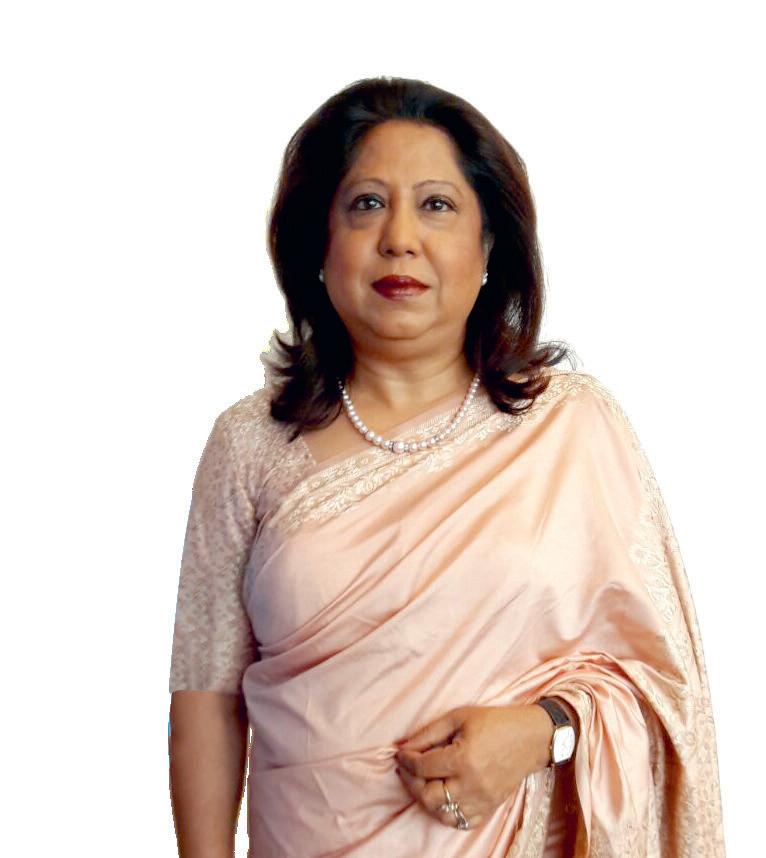
In May, Pramila Patten signed in Kyiv a framework for cooperation with the Ukrainian government on the prevention and response to conflict-related sexual violence.
Just days into Russia’s invasion of Ukraine, reports surfaced on “how sexual violence is being used, clearly as a tactic of war, to dehumanise, to destabilise the enemy,” she said.
Patten, whose mandate was only created in 2009, has previ ously said that “an active battle ground is never conducive to accurate ‘bookkeeping’.”
Ukraine is no exception. Whatever data available is “only the tip of the iceberg”--with an active battlefield, there’s a breakdown of normal services and support pathways. Compounding this is the stigma associated with sexual violence, which varies from culture to culture. “I met the mother of a victim who told me that her daughter was raped in front of her. It’s out of shame that [the daughter] just left, and the mother doesn’t know where she is.”
Moreover, “within this humanitarian crisis, you have a human trafficking crisis, which is invisible.” Her office is therefore working with the EU, OSCE and others in a bid to create a compact for refugee-
receiving countries to address this issue.
Although more needs to be done in this area, there has also been some progress. For example, under the UN Convention on the Rights of the Child and Convention on the Elimination of All Forms of Discrimination Against Women, work is being done for governments to recognise rights of children born as a result of sexual violence, who are often stigmatised or abandoned altogether. And one month ago, Guinean ex-dictator Moussa Dadis Camara and others were sent to prison following the 28 September 2009 massacre in Conakry stadium, during which at least 109 women and girls were raped.
Patten praises Grand Duchess Maria Teresa and her SSRU! initiative to create a global platform to raise awareness on the topic. The 2019 event was “no ordinary conference”, as it put survivors centre stage.
“[Grand Duchess Maria Teresa] has refused to shy away from the harsh reality of women’s bodies being used as part of the battlefield,” Patten added. “She’s really helping survivors to challenge the shame, the isolation, the abandonment and the untreated trauma which normally would shatter their lives.”
“Sexual violence is being used, clearly as a tactic of war, to dehumanise...”
PRAMILA
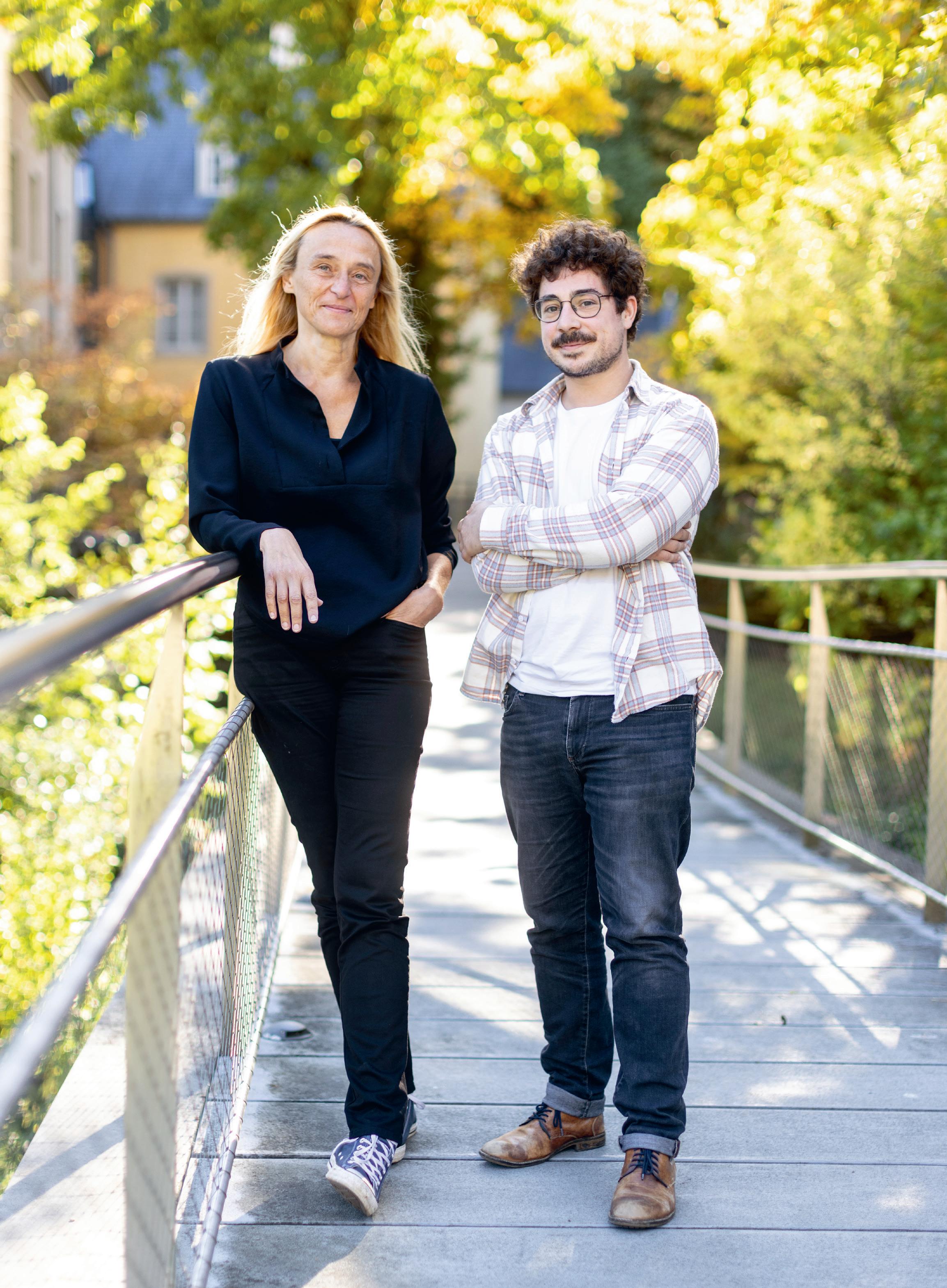
The UN’s COP27 is taking place in Egypt at the start of November, in the middle of an energy crisis. Mouvement Ecologique’s president Blanche Weber and energy specialist Christophe Murroccu look at this decisive event.
The UN climate conference is starting in a few weeks, and this in the middle of an energy crisis. Do you feel like the energy crisis encourages the energy transition more than the COP does?
CHRISTOPHE MURROCCU It’s difficult to say whether the energy crisis encourages the transition, but it definitely has an impact on the transition. For one, the origin of this crisis is very negative: the war in Ukraine came at relatively short notice and therefore led to short-term solutions that aren’t necessarily structural in nature.
And then, we’re not yet in the winter and [don’t yet have the same] demand for hot water and heating, so we can’t say yet how far the impact will reach. The crisis has clearly generated a whole series of reflections, among others in the Euro pean Union, when it comes to moving away from fossil fuels at a faster pace. So, I don’t know about ‘support’ but it’s moved things along.
BLANCHE WEBER There will now be a soci etal decision to take on whether this will go in the right or wrong direction. We are now in one of these disruptive moments that bring change with them. That’s doubt ful that things will continue the way they did before the war, but change remains a socio-political decision.
And we see two tendencies: one looks towards encouraging fossil fuels and returning to a nuclear discourse. The other party looks at long-term solutions.
Could climate action during COP27 slip into the background because of the urgent solutions needed for the energy crisis?
CM The crisis, as I said, has very clearly influenced the efforts and thought pro cesses of the EU. We got a new strategy in May--REPowerEU--that makes mem ber states reconsider their efforts and ambitions, be it in terms of greenhouse gas emissions or renewable energy. [There is also a will to be] independent from Russia and to consume less fossil fuels. The crisis has created a momentum within the EU that the EU can bring to the COP to plead for more ambition. But at the
COP in 2016, there was also a speech for more engagement and ambition. What remained were just speeches. So what counts this year--and that’s something we say every year--is to support these speeches with concrete actions. These measures should be structural and not just band-aids. They have to have a longterm effect.
You say that the EU could bring a positive momentum to the COP, but when you look at how EU member states--like Germany with its €200m package--have come up with individual packages, do you think there really is a chance for international solidarity in the face of climate change?
Founded in 1968, Mouvement Ecologique, also known as Méco, advocates for sustainable development, climate action and justice, the protection of biodiversity, citizen participation and an alternative, greener energy policy.
Chaired by Blanche Weber, the association now has around 3,000 members.
CM I think there is a chance. In 2015, a package of climate financing solutions was signed. It was a matter of hundreds of billions that needed to be gathered, mainly for mitigation and adaptation. Our prime minister [Xavier Bettel] said during the last COP that Luxembourg wanted to contribute €200m over 4-5 years to this sum. This means there is a dynamism but also a lack of concrete actions. This decision should be part of the next COP, alongside putting into practice decisions taken during COP26. Be it on a national, EU or international level: it’s good to hold speeches, but you have to show that you really mean it.
BW I feel like we’re in a technical debate right now. We are in a model--with our growth and the financing of our social system--that just doesn’t add up. We are in a logic of more consumption and energy use. This isn’t just about replacing gas with renewable energies but also where we will tabulate the energy consumption in the future.
There is also the social justice to con sider: How far will the countries that have caused climate change go to finance the countries that are suffering the con sequences of climate change the most, even if it’s just to acknowledge their debt?
We are now in a fundamental discussion, not about techniques, gas or renewables, but the direction our society is taking politically. Is our growth ideology right or not? How do we define social justice in our country but also internationally? Because the idea that we don’t have to consider the rest of the world is also over. These are very systemic, structural ques tions. Rather than asking whether the COP is an opportunity, I would ask, ‘How do we manage to show the urgency of the situation?’
We don’t really have a choice anymore, when you look at the floods in Pakistan this summer or the loss of biodiversity.
That we must act isn’t negotiable any more. We will have to see how the next six months go and make sure that we don’t fall into old routines and make mis takes. That some subsidies aren’t 100% climate-compliant isn’t the point--even
if we’re not fully supportive of the tri partite deal. The real discussion is that we must take decisions on a structural level because we don’t have a choice, unless we choose to ignore the future.
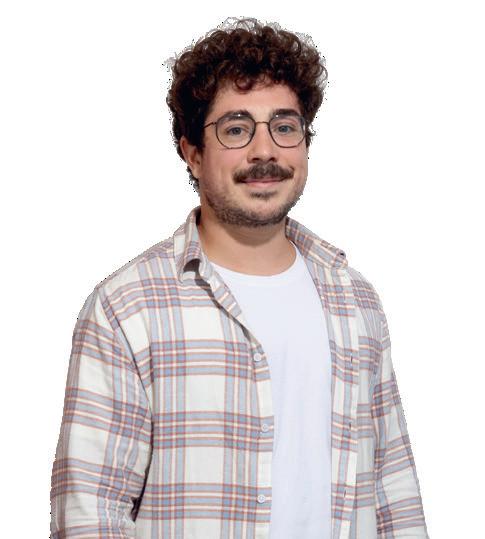
Is Luxembourg’s tripartite deal, which included fossil fuel discounts and VAT reductions, a lost opportunity to push people to consume less?
BW In all respects, it makes no sense. On an ecological level, it sends a wrong message to people. The energy price cap takes away the real costs of the market and doesn’t consider the impacts of this on the market. Price signals and real prices need to come back because they can have an impact on the behaviour of consum ers. We know that the people with the highest income consume more, so the current subsidies support their excessive energy consumption. I can understand the reasons--social peace and mitigating the impacts of the inflation--but, since we’ve known for a long while that this was coming upon us, it would have been possible to find solutions with social partners and businesses that are com bining social and ecological needs.
CM There should have been structural solutions. This is again slapping a bandaid on the wound. It doesn’t touch upon systemic inequalities.
There are also recommendations on how to consume less…
CM Luxembourg took its time to pub licly formulate these. So when we saw them, we just thought, ‘All this for this?’ These measures weren’t revolutionary to begin with, but there is also no liability behind them--everybody can adopt changes voluntarily and the government will just monitor the progress. We expected more liability for communes, for instance.

The COP27 summit will build on the promises of COP26 to phase out coal and reduce greenhouse gas emissions, focusing on the voices of minorities like youth, women and indigenous people. The conference in Sharm el-Sheikh will also bring attention to clean technologies and the centrality of water and agriculture in the crisis. The role of science in the future of climate action will also be addressed.
BW We also wanted all existing hin drances to be solved by the State. Cur rently, each commune has to find its own solutions… There should have been gov ernmental recommendations to help communes navigate obstacles when apply ing the energy saving plan.
The price cap also leaves everyone bit ter because those who consume a lot receive the same support as those who don’t. If you’d announced a threshold for con sumption, where anything above the threshold was at full price, people might have found it socially fairer. Plus there is
“ The crisis has created a momentum within the EU that the EU can bring to the COP to plead for more ambition”
Christophe Murroccu
The real topic is that we must take decisions on a structural level because we don’t have a choice, unless we choose to ignore the future”
At the rapid pace at which the cybersecurity landscape evolves, you might find yourself struggling to stay on top of your game.
Our security management services are designed to address these challenges.


This is how you see your company.
This is how hackers see your company.
the question among citizens whether the changes they adopt actually contribute to the solution. Their impact isn’t com municated enough to encourage them.
Some have said the crisis is the perfect moment to transition to renewables. Do you believe that the tripartite deal reflects this?
BW To be honest, our green subsidies are great. We’re at the top on an EU level. There are two issues though: we must improve the rental market for lower income households, and we must inform foreign residents who might not even know about existing governmental aids. And then there’s the fact that we have a lack of consulting and application help for the implementation of renewables. Some efforts are made, but we know that trades people [who install heat pumps and solar panels] are overwhelmed with requests and can’t take on more work.
The government should make sure to not just encourage people to switch but also support them, no matter how long it takes.
But it would be wrong to narrow down the discourse to citizens only, because businesses have to deal with rising energy costs, wage indexations and inflation too. On top of the demand from customers for the energy transition.
CM It’s a challenge.
BW Yes, and we don’t want them to be ignored because we’re under the impres sion that the industry and SMEs are more and more aware of the energy transition. That is extremely positive. These are actors who need years to transition, but they are aware of it.
BW As an association, I’ll say this: the tripartite deal is raising a lot of concern that there may be a stubbornness to not acknowledge the urgency of the energy transition. There is also the fact that the biodiversity crisis has slipped in the back ground even more... so the discourse is worrying. But, on the other hand, there are more and more individuals who per sonally and professionally question the established system. Their courage may be born from worry that we can’t con tinue to live like this because of the vis ible impact on our personal lives. I think the challenge in this crisis--where there are a lot of negative feelings--is to put together a vision of the future and to present the steps to reach it.
The big hope is that we could put social togetherness at the centre of this vision instead of consumption, car-centrism or economic growth.
CM It’s clear that more and more people want a more sustainable lifestyle and
environment. And it’s clear that the gov ernment is turning the right screws. What is missing are the long-term changes that would allow many to live more sustain ably. People can only be as sustainable as their environment allows.
How do we keep an eye on long-term issues like the loss of biodiversity and climate change when faced with situations that need immediate solutions like the pandemic in 2020 or the energy crisis right now?

CM You simply cannot ignore them. If you look at Luxembourg, we’ve seen the impact of the drought on businesses, res idents, farmers, older people… the cli mate and biodiversity crises have reached Luxembourg. There’s no need to be a scientist to see this. These issues will get worse over the years, and I think it’s impos sible to just turn a blind eye to this.
BW I think this fact has finally reached politicians. Just because you have issues with, for instance, making ends meet at the end of the month, doesn’t mean that you don’t care about the climate crisis. All these crises are connected and shouldn’t be separated.
Benefit from LUNEX University's expertise, a personal learning environment, and the practical relevance of our master’s programme in Sport Management and Digitalisation. Build your career as a sports manager in the global sports industry.
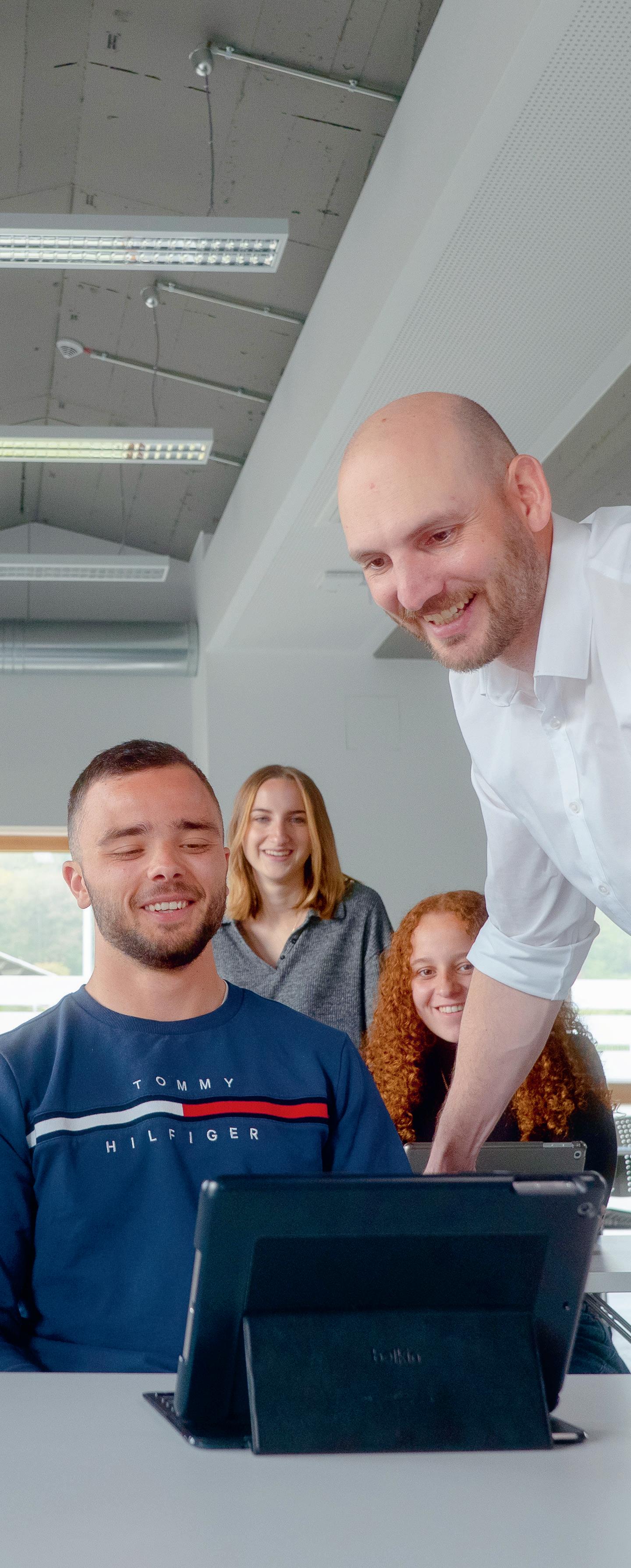
Blended format: 1st year online
of studies: Anytime
Flexible (approximately 2 years)
120 ECTS
English
part of it.
part of it.
For major companies with large IT estates, a cloud transformation strategy is essential. Over 80% of organisations are using cloud solu tions in 2022. Stéphane Riegel is Cloud Director at CGI Luxembourg and a specialist in end-to-end solutions for public and private entities.
Many companies use the cloud for more flexible and efficient applications. The cloud helps reduce time to market when upgrading applications or developing new products & solutions. This trend has come to the fore in recent years with the rise in remote working. “For CGI’s Voice of Our Clients programme, we interview clients about various strategic topics. Of the 1,700 worldwide clients who were asked about their cloud strategy in 2021, nearly 80% were planning to upgrade more than 20% of their applications over the next two years. Upgrading was their top priority, ranking in second place overall”. Companies are increasingly choosing public (or hybrid) rather than private cloud solutions, as confirmed in 2021. However, some sectors such as finance continue to favour the private model.
Define a strategy
Determine how many applications you need to migrate and how fragmented they are.
Build cloud infrastructure
Design the infrastructure and the security, automation and cost management elements.
Transform your Information System
Upgrade your applications using tools, processes and solutions.
Adopt cloud-native applications and green cloud computing Develop new, more sustainable applications.
process when providing migration support.
“
We start with a scoping phase to define the strategy based on the portfolio analysis. We then build the cloud infrastructure and start the technical migration process”. If required, CGI uses its “Modernization Factory”, a collection of tools and business solutions that facilitate large-scale migration. CGI also uses refactoring with fully cloud-native applications.

“
Adopting cloud solutions requires a clear strategy.
“To define the best solution for a company, we need to consider the context. We determine whether the applications are consistent in terms of technology and whether the IT teams use an agile, DevOps approach. We also apply the 6 Rs (Retain, Retire, Rehost, Replatform, Refactor, Repurchase)”.
The strategy will vary based on the number of applications. Compa nies must therefore assess their portfolio to develop a suitable approach.
Our approach is built on industry-standard cloud development concepts, following best practice, such as the ‘12-factor app’ principles for portable and resilient cloud applica tions. We also use DevOps to automate and industri alise integration, environ ment provisioning and application rollout”.
This approach aims to keep the application on the current information system.
when migration is over.”
“They also need to define their driver for moving to the cloud and what they hope to achieve. They should bear in mind that cloud transformation doesn’t end when migra tion is over”. Due to frequent technological enhancements, it is important to adopt a process of continuous improvement. This means monitoring successes and adjusting the target and approach based on experience.
End-to-end CGI uses an end-to-end
This support has proven invaluable to CGI’s clients. “We migrated several systems to a private cloud in the finance sector. In some cases, this involved just a few applications; in others, it was the vast majority. We’ve also run cloud-native develop ment projects, for applica tions in the public cloud. These two options are seldom combined”.
When assessing the portfolio, an application is considered outdated.
Rehost Consists in an identical migration of the application to the cloud with very few gain.
Aims to reconfigure or adapt an application to use cloud services. Refactor
This involves rewriting an application to be fully integrated into the cloud for maximum benefit.
Replace one of the applications with a purchased SaaS service: CRM, etc.
Photo Simon VerjusBoth * Firms that have taken both “basic” and “advanced” steps.
Advanced
* “Firms that have imple mented advanced digital technologies in their business,” such as ad vanced robotics, internet of things and big data.
Basic
* Took action during pan demic “to become more digital”, such as “provid ing services online”.
Neither
* Firms not investing in digital transformation.
Micro firms have less than 5 employees; medi um companies have less than 50; large firms have 250 or more staff. Certain figures rounded.
“Larger firms are much more likely to be on the right (or digital) side of the corporate digital divide,” according to the European Investment Bank. Smaller firms typically invest less in digital technologies. This hinders European digital transformation, because “small firms are more prevalent” in the EU than in the US.
Source EIB’s “Digitalisation in Europe 2021-2022” report *
Deloitte Luxembourg
NFTs
Lux
how
Club is hoping
Luxembourg
Although the non-fungible tokens (NFTs) art market has boomed and crashed in the space of a few months, there is more to this technology than a passing art fad, argues Adriano Picinati di Torcello, Deloitte Luxembourg director and global art & finance coordinator.
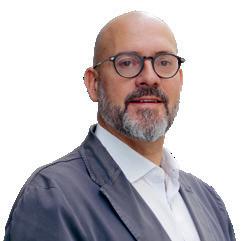
The $69m sale of an NFT artwork in March was the culmination of over 13 years of artistic endeavour. Every day over that period, the digital artist Beeple posted a new work of art online, which he brought in the work titled Everydays: The First 5000 Days. Also making the news were works on the theme of The Bored Ape Yacht Club and the strangely artistically basic CryptoPunks, which were also trad ing for millions.
No less than the equivalent of $40.9bn was spent on NFTs in 2021, according to an estimate by crypto analysis organisa tion, Chainalysis. However, as much of this spending was via cryptocurrencies, this year’s crypto bust has to be linked to declining interest for NFTs. It is said that NFTs which traded for six or seven fig ures are now retailing for a few hundred.
“It’s important that when we talk about NFTs, it is not just about art,” said Deloitte Luxembourg’s Adriano Picinati di Tor cello. NFTs are original versions of dig ital artefacts, with their authenticity verified by blockchain technology. This has multiple potential uses other than being at the heart of a digital artwork.
Fingerprinting is a use case that is attract ing attention. “This technique creates
and records the equivalent of the ‘DNA’ of an artwork or collectable item, through a scan of the object or the insertion of a chip,” Picinati di Torcello explained. “This information will be on a blockchain and will be associated with additional infor mation about the work, such as certifi cates of authenticity and origin, thus increasing transparency in the art mar ket.” This process can be used to verify the authenticity, traceability and owner ship of objects, such as jewels, precious metals and even collectable artefacts like limited-edition training shoes.
Even though most of the early hype around the art NFT market has died, there remains the potential for this technology to find a niche. “When I discovered NFTs, my horizons opened 360 degrees. It just opens so many more possibilities,” the Luxembourg-based artist Sumo told Delano earlier this year.
Part of this is how the technology cre ates new funding potential, said Picina ti di Torcello. “Art is a key element of humanity, but it needs to be funded, and NFTs open opportunities for multiple investors to fund projects while sharing ownership,” he said. There is also talk of creating “cultural bonds” which would support a multitude of endeavours, and this could be NFT/blockchain-linked.
The long-standing question around blockchain use cases (other than crypto currencies) is what value they add beyond that provided by more conventional ser vice providers. Could it be that finger printing will make the breakthrough?





Non-fungible tokens (NFTs) are facing a public relations problem, after having become a minor byword for hyped boom and bust. Lux NFT Club co-founder Liao Xue is keen to address some of the misconceptions and look at the technology’s intrinsic value.
For Xue, there is a degree of frustration that the swift rise and sharp correction in the NFT market have clouded commen tators’ views of this innovation. “A clear misconception is that NFTs are about investing to make a quick profit that is many multiples of the original investment. This is definitely not true,” he said.
Rather, Xue is keen to separate the “scam” projects from those with intrinsic value. “There is a misconception that because NFTs--like cryptocurrencies--create scarcity. This has a value of its own,” he explained. The reality is that the tech nology is more a facilitator. “Yet when looking at the market as a whole, the market treats crypto and NFTs in the same way as it treats tech companies.”

He points to a correlation between the value of leading tech companies quoted on the Nasdaq exchange with the funda mentals of the NFT and crypto world. Nevertheless, Xue recognises that “it is a little bit more volatile, and risk[ier] than tech stock, but the shape of the technical analysis curve looks similar.” Hence, he suggested that investors should take a
longer-term view of the technology rather than forming a view at the current moment when markets are under pressure.
Ultimately, NFT technology is more than being an offshoot of the art market. “A widely held misconception is that this is just about pictures that could be cop
ied,” as NFT technology works to ensure value is captured in many areas. He pointed to the likes of Starbucks, Porsche, Gucci and Adobe, which are getting involved in this space.
“What is an NFT? Fundamentally, it gives one-time access, and we see how this works with software,” the Lux NFT Club co-founder said. He pointed to soft ware companies that have changed their business model from offering one-anddone purchases to using recurring (and more lucrative) subscription models. Poten tially this idea could be brought to the world of physical products as through the tools behind the NFT concept.
The Lux NFT Club describes itself as “a community of NFT enthusiasts as well as collectors and artists.” Along with his fellow co-founder Jil Haberstig, the club organises events and has recorded a series of podcasts.
Xue says that in these early days, most interest in the club is from “professional people who have an interest in technol ogy, in blockchain, in NFT, but are not necessarily working in that space or have a close connection with that area.”
He said the motivation to start the club was “to fill a gap locally”, to give an opportunity for people to explore the possibilities. The goal is also to make international connections in this global business. The onus is on those working with this technology to turn its reputa tion around.
Of



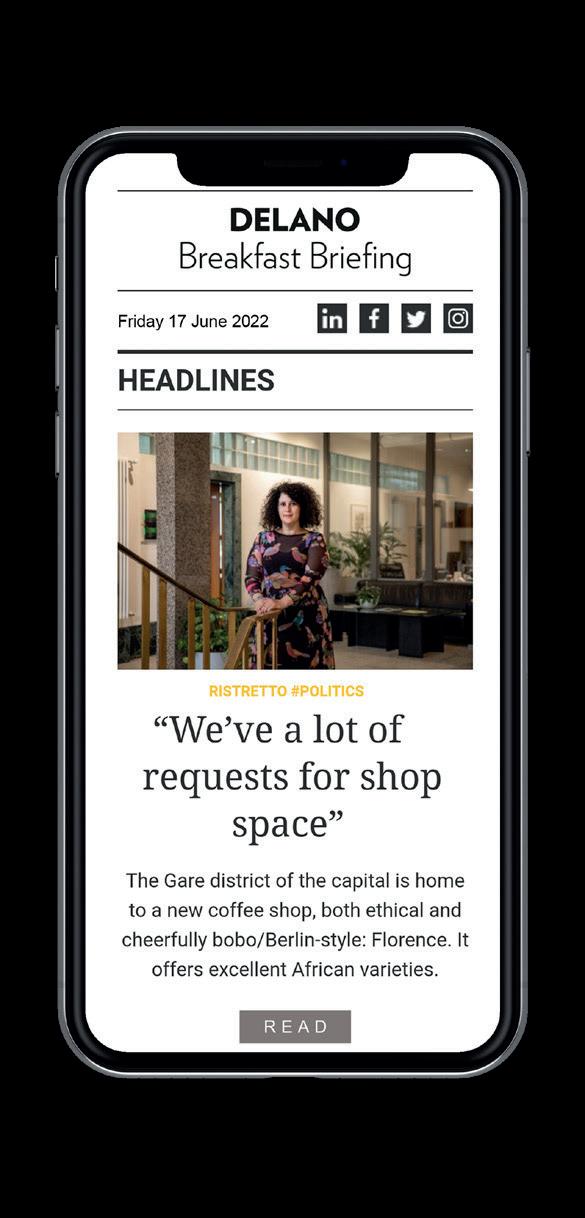
Artists working in plaster or bronze can sell or break the moulds used to ensure their work cannot be reproduced. There is a similar process around the negatives of photos taken on film. NFTs appear to offer similar possibilities for digital artists.
“From time to time, the art world hears reports that original versions of [Rodin’s]
The Thinker have come onto the mar ket,” said Kevin Muhlen, artistic director of the Casino Luxembourg contempo rary art museum.

How can we be sure that these bronze masterpieces are the original work of the celebrated French sculptor, from his studio during his lifetime, and not some one else who used the original mould to knock out a few copies?
Alternatively, one might imagine that the negatives behind The Family Of Man collection in Clervaux are kept secure from reproduction in the safes of trusted guardians. “In photography, it’s about the prints, and the artist decides how many originals there will be, and the art ist gives their proof,” said Stilbé Schroed er, coordinator and assistant curator at Casino Luxembourg. Yet the temptation to make a few extra copies is there. Even for paintings, there is a persistent suspi cion that the “Old Master” being sold at auction for tens of millions might be a recent, skilfully produced copy.
NFTs potentially offer the way to end this doubt for both digital and physical works of art. For the latter, a detailed “fingerprint” scan of the painting, sculp ture or installation could be attached to
an NFT, potentially creating an unbreak able, verifiable link. For purely digital work on still or video, the NFT link can be embedded in the work.
“When we show an immaterial work like a video, we sign a contract that says that once the exhibition is over, the dig ital file will be destroyed,” said Schroeder. Yet what works for a relationship with a not-for-profit museum might not hold tight in the sometimes shady world of art dealing.

This creates a new set of questions regard ing how people experience art. “When we put on exhibitions, we give shape to the collections, we try to give the public an experience of the work,” said Muhlen. “It’s not just a question of a file on a com puter, it’s also about how to present this digital file on a screen, on a projection, via a headset in an immersive installation and so on.”
According to Vignesh Sundaresan, who paid $69m for Beeple’s Everydays: The First 5000 Days, owning this NFTbacked work is about sharing. “What NFTs do, instead of giving the impor tance to that copy of the file, [is to] give importance to something else big. The idea that some person supported an art ist at some time, and this was the mem orabilia,” he told Bloomberg last year. “You don’t need everyone to pay for it. There can be a few people who pay for this production, and they get a credit to have been part of this production. And that’s it.”

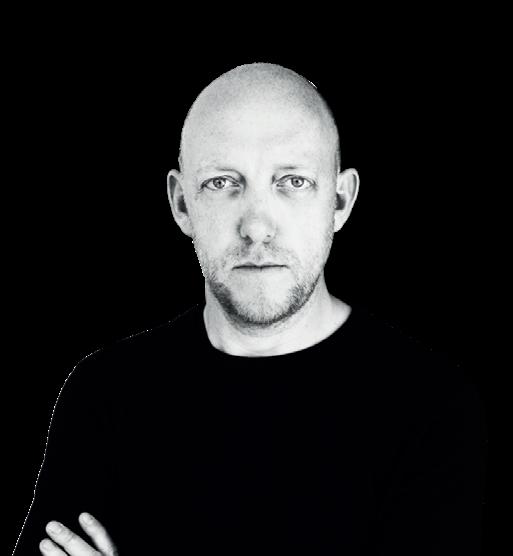
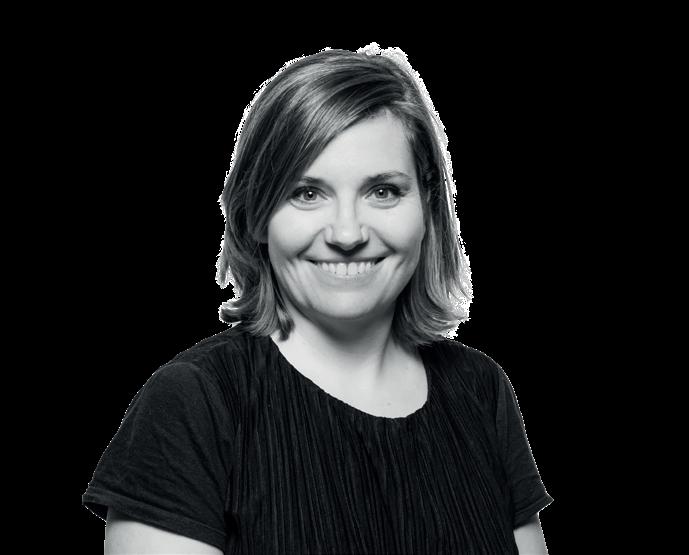
How will the draft law to allow cannabis cultivation at home impact consumption?
MANUEL MEKIDECHE I don’t believe it will change people’s consumption. I just believe that it is not really a good idea [to have this legislation] in the form of home growing. It will be tough for some people who will misgrow, and they will want to consume but won’t have the result they want. Then they will probably look at the black market.
I am openly saying that it’s great to have legalisation, but I believe [this approach] is not the best way. You can [instead] create a dispensary and have total control of the growing and the qual ity--and make sure you have people who can actually give you some advice about what you are smoking. And then you cre ate jobs. That benefits the economy more than allowing people to grow at home. You can grow tobacco in Luxembourg but nobody does it. You won't see some one say, 'Hey, have you seen my tobacco? It’s as good as Marlboro.'

CARLOS PAULOS The proposal to give access ibility to cannabis is a good one. People who want to consume cannabis will have the possibility to take care of a plant, and
this gives you responsibility, but you also have a relationship with what you are doing and what you are consuming.
We already are in a society that uses a lot of cannabis in different ways, so it’s not something new. We have home grow ers already, for sure. So when I say [we are] going in the right direction, I mean that this [draft law] is also taking some people out of an illegal situation, and that’s a good thing for me.
On the other hand, not everybody will have the possibility to start home growing. I think many people don’t have the knowledge or don’t want to because they just want to use it. Is this change bringing us to an increase in consump tion? I don’t think so. The major diffi culty in changing the legal context is that the only possibility in the proposal, for the moment, is to smoke at home, and that’s not a good thing.
CP Because when we’re talking about cannabis in a social and recreative con text, it’s a substance that is consumed to share moments with other people. It’s like alcohol; it’s a social substance. So only allowing to use it at home, for me, is problematic.
Everybody will agree in saying that if you want to drink, go to the pub, and have a drink with your friends, and nobody would recommend that you drink alone at home.
MM Thank you for saying that. Cannabis is a social drug; you want to share some thing and have fun with it. It’s not to iso late yourself. People start to isolate themselves because the THC [psychoac tive component of cannabis] is too much. That’s the problem when you don’t have control over the portion of THC in the product. You need to have a certain level that makes sure that people stay social while consuming.
“Cannabis is medical in its essence. The problem is the lack of knowledge”
MM They take it too [lightly] and in a political point of view: ‘Let’s legalise it, so we can get some more people to vote for us.’ They only care about medial can nabis, but when it comes to recreative use, they don’t. That’s why it took so long for them to do something. Otherwise, it would’ve been legal for a long time.
They import their cannabis from Canada, but they’re telling us that we can grow it from home, instead of build ing some sort of schools and teaching people how to grow. That would create jobs and business and, at the same time, educate people.
CP The change of the legal framework will take place in several steps. At the moment, we have access to the illegal market, so you don’t know what you’re using, except if you come to us [4motion], where you can test your substances.
You have advantages if you have a reg ulated market, and you also have to addi tionally make efforts to educate people about the benefits and the risks of using cannabis.
I think doing this [transition] in sev eral steps is good because it gives us time to monitor and to follow up how this phenomenon will develop in our society. One big benefit of giving a legal frame work to access cannabis is that it will push this topic further away from being a taboo.
Medical cannabis use has a concrete legislative framework. How do you evaluate it?
CP When we talk about medical canna bis, there is not necessarily a difference in the product, but it’s the follow-up from a doctor and having medical assistance. That is the big difference from consum ing something on your own with infor mation from a salesman.

MM I disagree with you, to be honest. What you’re saying is right, but at the same time it’s wrong because you need information from people who know about cannabis, and many people here don’t, including the doctors.
Cannabis is medical in its essence. The problem is the lack of knowledge [about cannabis variety]. You get the indica, which is more likely to calm you down, and the sativa, which stimulates
your brain. In Germany you have almost 60 different types of variety that are tar geting specific needs.
What gap in cannabis knowledge do we see in Luxembourg?
MM I don't know why people in our soci ety love to put things in a category: it’s either medical or recreative. But that’s a wrong way of seeing things. It is the way you're going to use marijuana that’s going to make it recreative or medical. And you don’t need a doctor to tell you something that he or she doesn't know. Because the doctor doesn’t smoke weed or eat it to know the effects of it. That’s the prob lem in Luxembourg because nobody--in the health ministry or any doctor--can call themselves a cannabis specialist.
CP You don’t have to be an active con sumer to know about the effects if we are talking in a medical context. It’s about doing a follow-up regarding a dis ease. We're talking about patients, not about users.
MM I am sorry, Carlos, but a patient is a user.
CP We have a different point of view on something, and we don’t disagree, but you’re mixing up the points of view. The difference is that when we talk about patients, they have a follow-up from a professional. And if you’re a user, you can use it of course as self-medication, but you’re not your own patient.
“It’s like alcohol, it’s a social substance. So only allowing to use it at home, for me, is problematic”Carlos Paulos is the director of party drugs awareness
The Smart City Expo World Congress will take place in Barcelona on 15-17 November, and several Luxembourg representatives will be present. Here are some of their visions of smarter urban design.

In its Smart City Strategy Index (SCSI) 2019, global consulting firm Roland Berg er analysed 153 cities worldwide, ranking Vienna as number one. The Austrian capital scored a total 74 points out of 100. London took second place (73 points), while third place (72 points) went to St. Albert, Canada, which has a population comparable to that of Luxembourg City.
Notably absent from the index? Lux embourg City. Or any city in the grand duchy, for that matter.
But the City of Luxembourg (VdL) is currently underway preparing a smart city strategy which would allow it to take part in such indexes in the future. The strategy should be released latest “within the com ing months”, according to Luxembourg City first alderman Serge Wilmes (CSV). With the aid of people like Guy Breden, IT specialist at the VdL, the working group has identified the need for better govern ance and centralisation when it comes to a smart city strategy.
A variety of verticals
Of course, the City already has plenty of smart infrastructure and technology in place. As Breden notes, “We were the first town in Europe to have wifi, a hotspot for the entire city.” There’s inclusive free trans port, with real-time mobility information; smart parking, even smart meters. The VdL has its own smartphone app, and there are more projects on the way.
“In 2020, we did interviews with our 56 departments [to see] which projects are smart, which are in planning, which are executed,” Breden explained. They then reviewed which projects could be interest ing for citizens, which fit the budget, etc. As an internal exercise, the team also used the methodology in the Roland Berger index to determine where the City would hypo thetically rank, and they scored at 31 points. But the VdL is determined it could reach 45 to 50 points in the short- to mid-term, “perhaps in five years,” according to Wilmes. This would place it above the 41 total aver age in the SCSI (see chart, page 42).
“But it’s not all about rankings… people should have a clear added value from this strategy,” Wilmes emphasised. “But it’s important for us to compare ourselves to other cities and see what they’re doing. Then you can learn, challenge yourself and always become better.”
While IT solutions can contribute to making an urban centre more sustainable
“Growing populations and increasing challenges such as traffic congestion, air pollution and insufficient infrastructure have seen cities the world over turn to digital technologies to solve their problems. But it's only when these solutions are interconnected and aligned in the form of a smart city strategy that the individual measures can unfold their full potential.”
Source www.rolandberger.com
and efficient, at the heart of the concept of a smart city are citizens and the desire to facilitate their daily lives. Smart cities should be participatory and inclusive.
The VdL already regularly organises public consultations to get citizens’ opin ions on board. It has also identified vari ous examples on its website of how a city can be smart: infrastructure, people, gov ernance, mobility, environment and living. It will also be among the range of Luxem bourg stakeholders that will be present at the Smart City Expo World Congress tak ing place on 15-17 November in Barcelona, Spain, with this year’s theme being to “showcase the strength and innovative
potential of the European smart cities and their goal to achieve climate neutrality”.
At the time of writing, Cindy Tereba, director of international affairs at the Lux embourg Chamber of Commerce, con firmed that the grand duchy’s national pavilion at the congress would include 13 exhibitors. The delegation includes a hand ful of startups, innovating in such fields as water management, mobility, housing and more.
Blue-green infrastructure
One such startup to attend is WEO, which takes data from space (e.g., satellite imag es) and, through deep-learning algorithms, provides its clients with maps and deriv ative information which can improve quality of living. The cities of tomorrow will need smart urban land-use planning, also to deal with climate challenges. That includes the question of how to deal with natural elements--“blue”, referring to rivers and other bodies of water, and “green”, or vegetative landscapes--to fit community needs.
The grand duchy has around 1,800km of hydrographic network, which includes smaller rivers that are susceptible to flood
The Smart City Strategy Index by global consultancy firm Roland Berger rated 153 cities along three main dimensions, with main 12 criteria*.
Source Roland Berger, Smart City Strategy Index
In
ing. Already working with a handful of communes within the grand duchy, co-founders Imeshi Weerasinghe and Char lotte Wirion explained to Delano some of the susceptibility urban areas have when it comes to droughts and flooding, and how to potentially manage that better.
“Trees, in general, are cooling, if they are healthy,” Wirion explained. “Grass is cooling, but as soon as it turns into dry grass, it heats up, sometimes even more than asphalt. That’s a bit the issue here: so then the cool spots in our cities turn into hot spots.”
Imagine a green spot like the Kinnekswiss park, the site of many a funfair, frisbee toss or picnic. A place where people can enjoy the urban outdoors but where grass, of course, gets trampled. Add to this the second hottest summer the grand duchy just experienced. Such places are prone to a vicious cycle--when it does finally rain, Weerasinghe explained, “the water, instead of going through, just runs off and [the grass] gets dryer and dryer.”
On the flip side, when it comes to flood ing, projects are already underway to renaturalise the Pétrusse, for example, which is “one step to avoid having a big ger impact [with] flooding”, according to Wirion, although the impact remains to be seen. While WEO technology can aid in water management solutions, many urban green spaces “proportionally have a lot of grass; how it’s planted, compact, not a lot of [water] storage means it’s affected quicker, compared to more nat ural green spaces outside of urban areas,” Wirion added.
Mobility, shopping and more Others participants include Savvy Mobil ity, a mobility on-demand software through the Losch Digital Lab that determines in real-time the best sequence of pickups and drop-offs which could involve dif ferent transport types. Fleets could use these as a solution, something interme diary “between a taxi and a bus,” head of mobility Darian Heim explained.
But there are challenges for companies when it comes to smart city momentum. As Heim explained, depending on the city, data may or may not be as readily open and available. There’s also the issue of data governance. But ultimately, even if a per fect solution exists for a particular prob lem, “the last challenge is how to mitigate to make it commercially viable… Smart
SCSI,
average overall score
cities
score
Georges Zigrand is a designer and con sultant who has worked on several pro jects within the city. He runs his own consultancy--as well as a fascinating web site, where he shares “observations on the topic of design and the culture of objects”.
One of his consultancy’s concepts and design strategies includes a “comprehen sive wayfinding concept” for Kirchberg, which “consists of a family of modules adapted to different urban scales and their context”. Maps, essentially, which help visitors to Kirchberg better orient them selves across the plateau’s wide expanse. The maps place the user at the centre: they aren’t oriented traditionally (north-south, east-west), rather they’re heads-up maps--wayfinding oriented in the direc tion of travel, more intuitive for the user.
Another concept Zigrand has worked on is the Fort Neipperg parking floor sig nage: “We separated the signage system for drivers and pedestrians for clarity and reduced the graphic interventions and colours to a strategic minimum to max imise their effectiveness,” his site explains. Floor information for pedestrians is only at the exit stairs area, “creating an intui tive ‘visual pull’ towards them,” and each floor includes one large number, one solid colour, one illustration. Zigrand explained further: “One of the three you will remem ber, depending on how you function.”
city solutions are still procured on an insuf ficient scale.”
For TiQuest CEO Alexandre Marquet, much of his startup’s development has relied on word-of-mouth. TiQuest offers software and hardware that helps digitise shops with paperless receipts, but it also launched a digital menu software during the pandemic which allows for contact less ordering. Sometimes convincing shops isn’t so obvious. “The shop says [e.g.], last month was not good--based on a feeling, not on real data,” said Marquet. But such software could help cities better under stand where people are spending money, what traction different shopping areas get versus others. With weather data, you could even see how sun or rain impacts visits to a restaurant.
But while a smart city tends to bridge tech and design and its citizens, there are other ways a city can be intelligent.
There’s indeed an explosion of tech nology and programming, “just because you can, not [necessarily] because it’s bet ter,” the designer argues. One example is questioning a city’s lighting at night. Con sider, for example, “if you’d have less light ing in the streets and just on those spots [like zebra crossings] higher lighting where it’s crucial, to emphasise more.” In those places it’s probably necessary: but what about in other locations? Under bridges, inside buildings, etc.? “You have a lot of problems with birds and insects that are disturbed by light pollution,” Zigrand added. And, while he isn’t advocating for a dark city by any means, he does imagine what it could be like in a “city where you can see the stars.”
will succeed to Romain Bausch (2006), Michel Wurth (2008), Ernst-Wilhelm Contzen (2010), Gaston Reinesch (2012), Pierre Ahlborn (2014), Marc Giorgetti (2016), Norbert Becker (2018) and Michèle Detaille (2020)?
laureates of this 9th edition will take place

gala
1,000 decision-makers.
be given a seat at the dinner or alternatively (subject to
member company
a table for
people (at the price of 9).
A foretaste of some lip-smacking cuisine
four Luxembourg catering services.
A colourful array of pan-fried fish filet with crispy skin, served with basil purée and accompanied by some celery, steamed butternut and mashed Vitelotte potatoes
elegant cold platter consists of a salmon filet marinated in ani seed and local mustard seed, Vitelotte potatoes, pattypan squash, dill, carrot marinated
beer, cucumber, stuffed mini pepper, mandarin and blueberries.

This beautiful presentation of filet of beef Wellington comes with a cool twist: a puff pastry base topped with a mushroom duxelle and the filet, decorated with a spiral brick pastry, two-coloured Parisienne carrots, grilled potatoes, celery balls and green zucchini.
4
Breton sole filet, creamy lobster mousseline, green celery, chante relles and a fresh lovage emulsion. Above, poached John Dory filet seasoned with pata negra, arti choke, shrimp and more.

Three tips for choosing a caterer for your business event by Business Events Luxembourg.

1
Define your selection criteria. Otherwise, you may lose time.
Compare offers and accompanying services--setup, cleanup, decorations, etc. There are a variety of caterers for every budget; get at least three proposals.
3
Go local, especially if you host an international event. Ask the caterer for local wines and dishes, like Rieslingspaschtéit, Baumkuchen. Or go wild, and ask your guests to pronounce Gromperekichelcher. Remember orange trees do not grow in Luxembourg, but apple and pear trees do, and they give us healthy juices.
“Be aware of the processes involved, meals to be made, what’s required for taking orders…”
Brian Matos Batista, EHTL alumnus
The number of company members of the largest business club in Luxembourg.

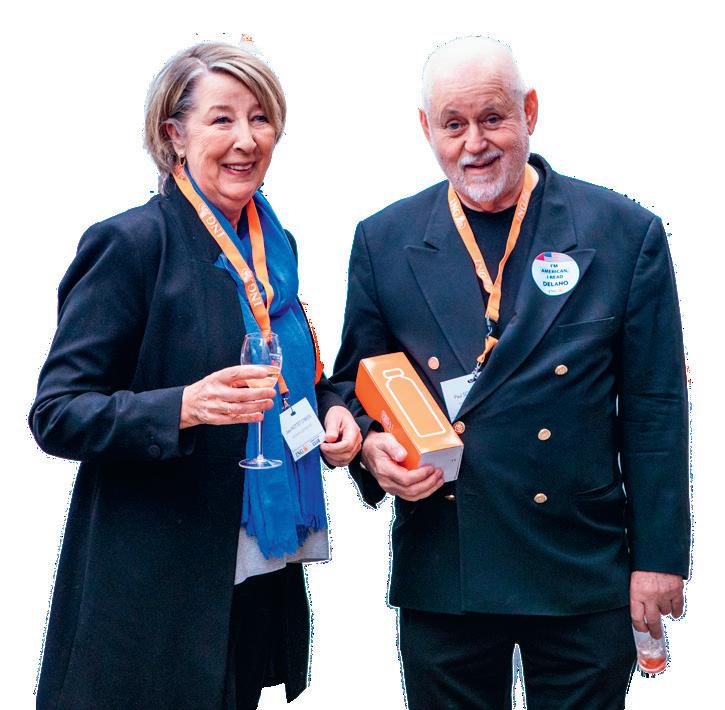
The number of individuals who are part of the vibrantly active Paperjam + Delano Club community with whom you will get to interact.
The number of opportunities to network and learn, split into 120 shows, talks, social events and 130 advanced trainings, workshops and webinars.

The number of annual training hours for your employees to develop their hard and soft skills: an additional benefit for you and useful extras for your teams.
Another month full of business events. Our members were able to network and develop new opportunities at our social events with a Networking Circle and a Carousel Lunch and develop their skills in our monthly Workshop Day. Transatlantic links and US startups moving to the grand duchy were highlighted at a Delano Live event on 15 September. We would like to thank our sponsor ING for their support. On 22 September, nine export champions shared the story of their adventures and their hopes for more Luxembourg initiatives to be successful internationally. For its second edition, Paperjam’s Real Estate Seated Dinner Party brought together the economic actors of the real estate sector for a seated dinner accompanied by a conference by Jean-Pierre Zigrand, director of the Systemic Risk Centre and professor of finance at the London School of Economics. We would like to thank again our gold sponsors, INOWAI, Iko and Arendt, without whom this event would not have taken place.

Please check the Club section on our website paperjam.lu. Select, among all the digital and on-site events listed, the ones you would be interested in, fill in the registration form at the bottom page and register.
Please email the Paperjam + Delano Club via club@paperjam.lu and an account manager will be in touch to introduce you to all the perks offered by the largest business club in Luxembourg.
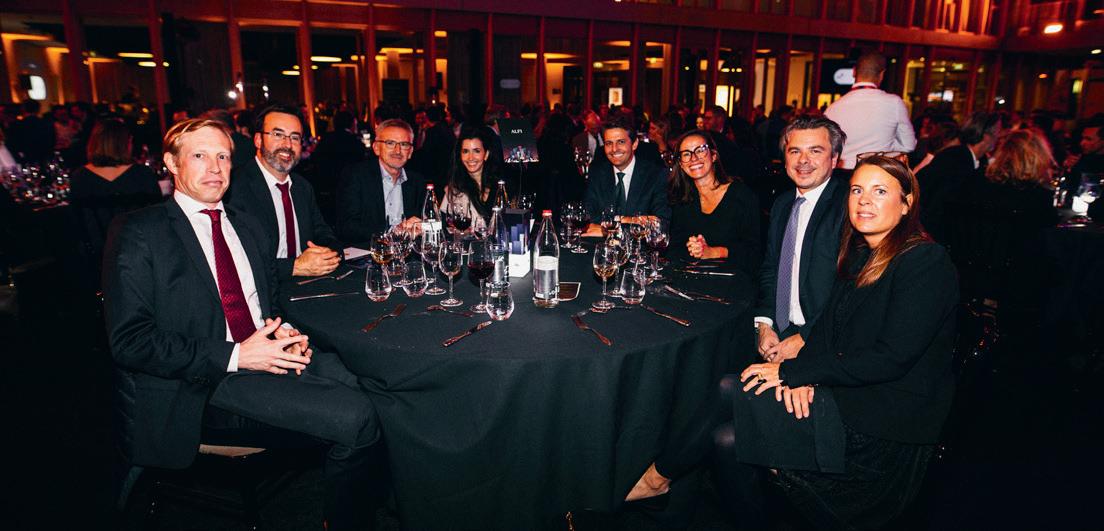
have started to import knowledge, and this comes from

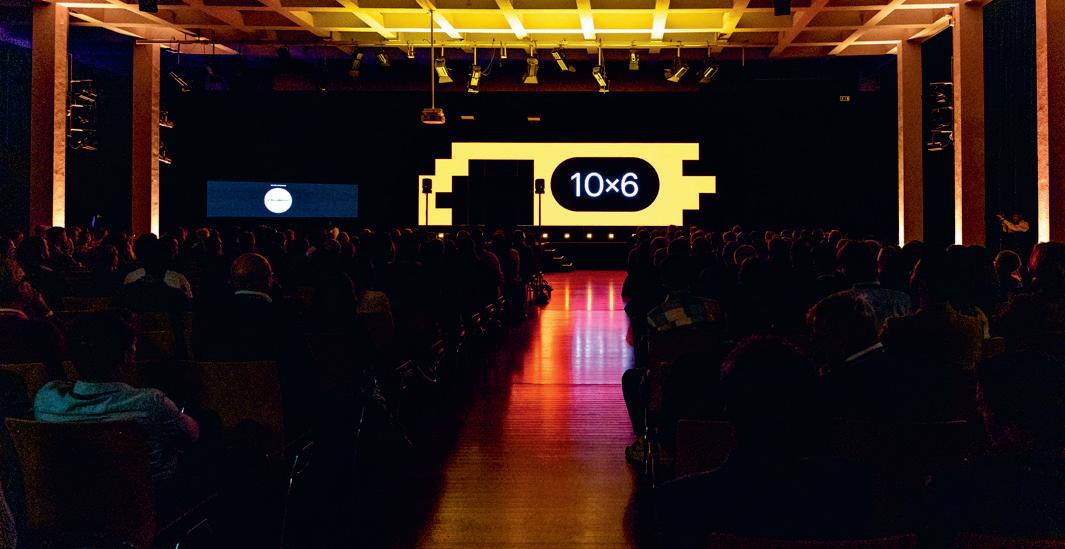

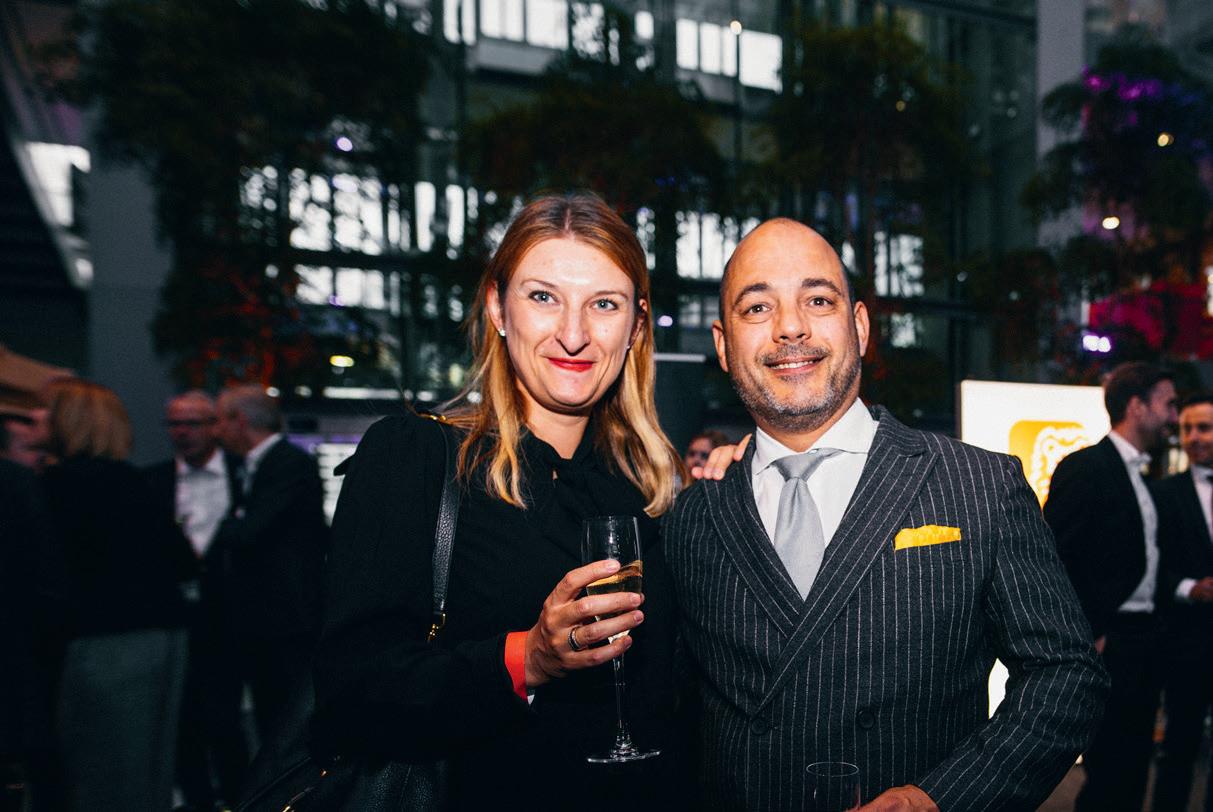






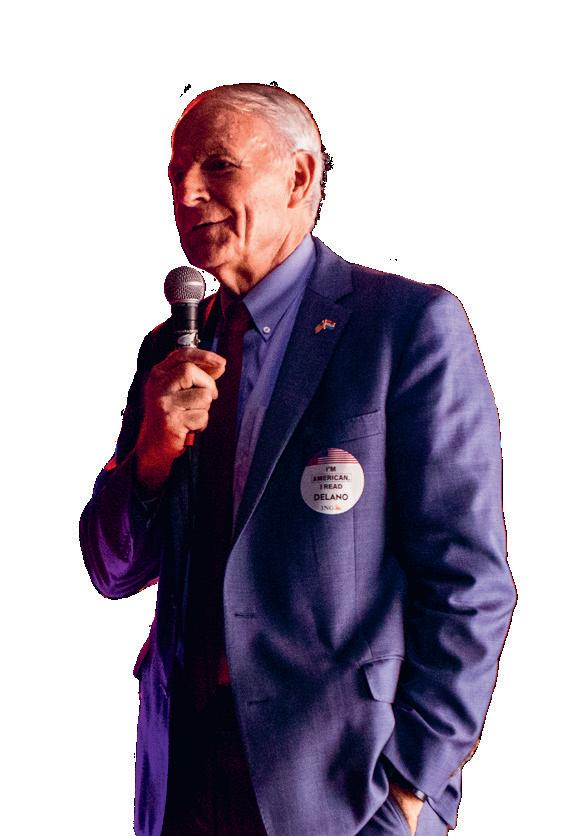
Phone (+352) 20 70 70-150 E-mail news@delano.lu
JOURNALISTS
Lisa Christl (-123)
Aaron Grunwald (-152)
Tracy Heindrichs (-164)
Lydia Linna (-165)
Jeffrey Palms (-156)
Cordula Schnuer (-163)
Josephine Shillito (-153)
CONTRIBUTORS
Stephen Evans Teodor Georgiev Marie Russillo (photography)
WEB PUBLISHER & COMMUNITY MANAGER Sonal Bhadoria
PROOFREADING & FACTCHECKING Maison Moderne
PHOTOGRAPHY Romain Gamba Guy Wolff Matic Zorman
PUBLISHING DIRECTOR
Bérengère Beffort
EDITORIAL DEVELOPMENT DIRECTOR Nathalie Reuter
EDITOR-IN-CHIEF, DELANO MAGAZINE Natalie Gerhardstein (-154)
EDITOR-IN-CHIEF, DELANO DIGITAL Duncan Roberts (-151)
DESK EDITOR, DELANO MAGAZINE Abigail Okorodus (-155)
Phone (+352) 20 70 70-300
E-mail brandstudio@maisonmoderne.com
DIRECTOR
Youcef Damardji
STRATEGIC BUSINESS DEVELOPMENT ADVISOR Francis Gasparotto (-301)
COMMERCIAL ASSISTANT Céline Bayle (-303)
MEDIA ADVISORS
Nicolas Galtier (-318) Mélanie Juredieu (-317) Virginie Laurent (-322) Aline Puget (-323) Léo Santoro (-335) Mikaël Spezzacatena (-326)
HEAD OF CONTENT STRATEGY Emmanuelle Thivollard
CREATIVE DIRECTOR Jeremy Leslie
STUDIO MANAGER Sandrine Papadopoulos
ART DIRECTOR José Carsí
LAYOUT
Sophie Melai (coordination), Stéphane Cognioul, Salomé Jottreau, Louna Mayer
ILLUSTRATIONS Salomé Jottreau
To contact staff members
SEND AN E-MAIL TO firstname.lastname@maisonmoderne.com
WRITE TO PO Box 728, L-2017 Luxembourg
OFFICES
10, rue des Gaulois Luxembourg-Bonnevoie
10, avenue de la Liberté, Luxembourg-Gare
www.maisonmoderne.com
Phone (+352) 20 70 70 E-mail publishing@maisonmoderne.com
FOUNDER, CHAIRMAN AND CEO Mike Koedinger
ADMINISTRATIVE AND FINANCIAL DIRECTOR Etienne Velasti
PUBLISHING DIRECTOR Bérengère Beffort
STRATEGIC BUSINESS DEVELOPMENT ADVISOR Francis Gasparotto
DIRECTOR, BUSINESS CLUB Michel Grevesse-Sovet
CHIEF DIGITAL OFFICER Viktor Dick
AD INTERIM HR MANAGER Sylvie Notarnicola
ADMINISTRATIVE MANAGER Sylvia Leplang
DIGITAL PROJECT MANAGERS
Meryem Alamy & Antonello Di Pinto
DISTRIBUTION MANAGER Quentin Marenic
Moderne
All rights reserved. Any reproduction, or translation, in whole or in part, is prohibited without the prior written consent of the publisher. © MM Publishing and Media S.A. (Luxembourg). Delano™ and Maison Moderne™ are trademarks used under licence by MM Publishing and Media S.A. ISSN 2220-5535
In accordance with article 66 of the law of 08.06.2004 on the freedom of expression in the media, the following statement is obligatory “one time per year, in the first edition distributed”. We have decided to publish it each month. The company that publishes Delano is directly held, by a 100% stake, by Mike Koedinger, a publisher registered in Luxembourg. He is chartered with general and daily management.




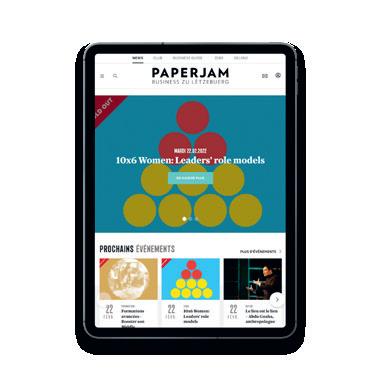


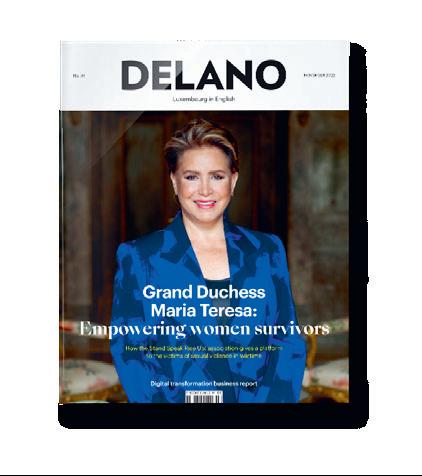
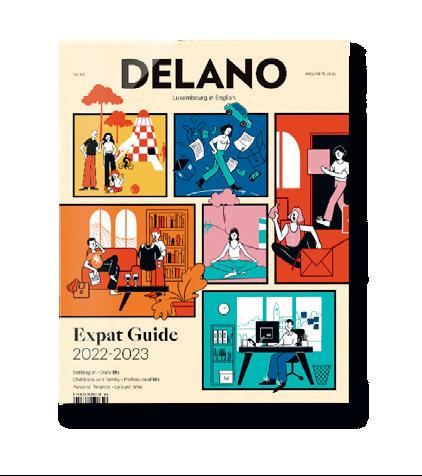



Your business in one sentence?
We are a young and dynamic team leading a fast-growing food truck business that employs around 33 people and is specialised in high-quality burgers.

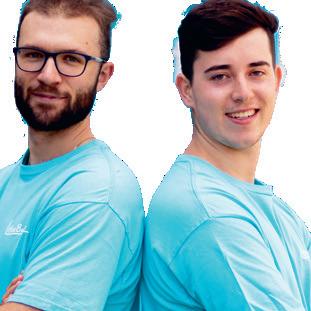

[We’re] a single-product culinary startup centred around cream puffs. We only make one pastry-an unlimited amount in an artisanal and responsible way.
Fellness is a grooming salon and producer of eco-friendly and natural care products for pets.

Our business is a small and friendly restaurant, and our products are healthy and fresh.
Top achievement in the past year?
We expanded the company by buying a fourth food truck, by adding a sixth sales point in Rockhal and by renting a warehouse with new offices serving as our headquarters in Howald.
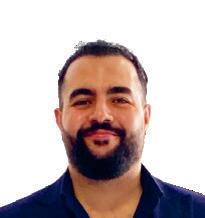
We’ve developed our products... We are proud to be the reference for cream puffs in Luxembourg and to have exceptional customer satisfaction, thanks to very positive feedback.
Since the end of 2021, I was working on the Fellness catalogue, which was finally published after long months of work in June 2022.
During the last year we managed to attract more customers even in the covid period and to get support especially from Luxembourg residents.

What did the financing you received support?
The investments that were made in the company mainly served to buy new food trucks which increased and multiplied our sales.

The main activity that Microlux’s funding supported was the opening. Without this valuable support, we would not have seen the light of day.
Most challenging aspect of growing a small business?
High investment and expenses in the beginning are a very big issue.
Exorbitant rent prices in the city centre do not match the number of clients. If rent prices were 30% lower, shops would be in much better shape.
The creation of the catalogue and easier production for the care products.
The funding we received helped us with advertising, but also we were able to raise the money we needed to start my dream of having a restaurant.
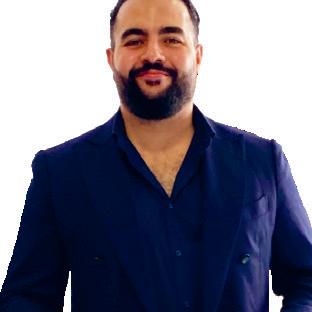
First, you need an uncommon business idea for less direct competition and to satisfy customers without neglecting the quality of the service or products.


Financing is the most challenging thing; fortunately, Microlux supports and encourages entrepreneurs.

Business plans for 2023?
We plan on buying another food truck and a trailer for drinks. We’re looking for a place at the 2023 Schueberfouer. The goal is to generate €3m in 2023 and reach €9m by 2029.

Surviving rising costs.
Finding more resellers for my products and maybe paving the way for a second Fellness salon, if I find the perfect person to trust for this. Better small-but sure--steps.
We hope to expand-perhaps by opening a second restaurant-and renovate the current restaurant to attract more people and make it even more cosy and welcoming.
Winners of the first My Microbusiness contest by Microlux share their achievements, one year on.

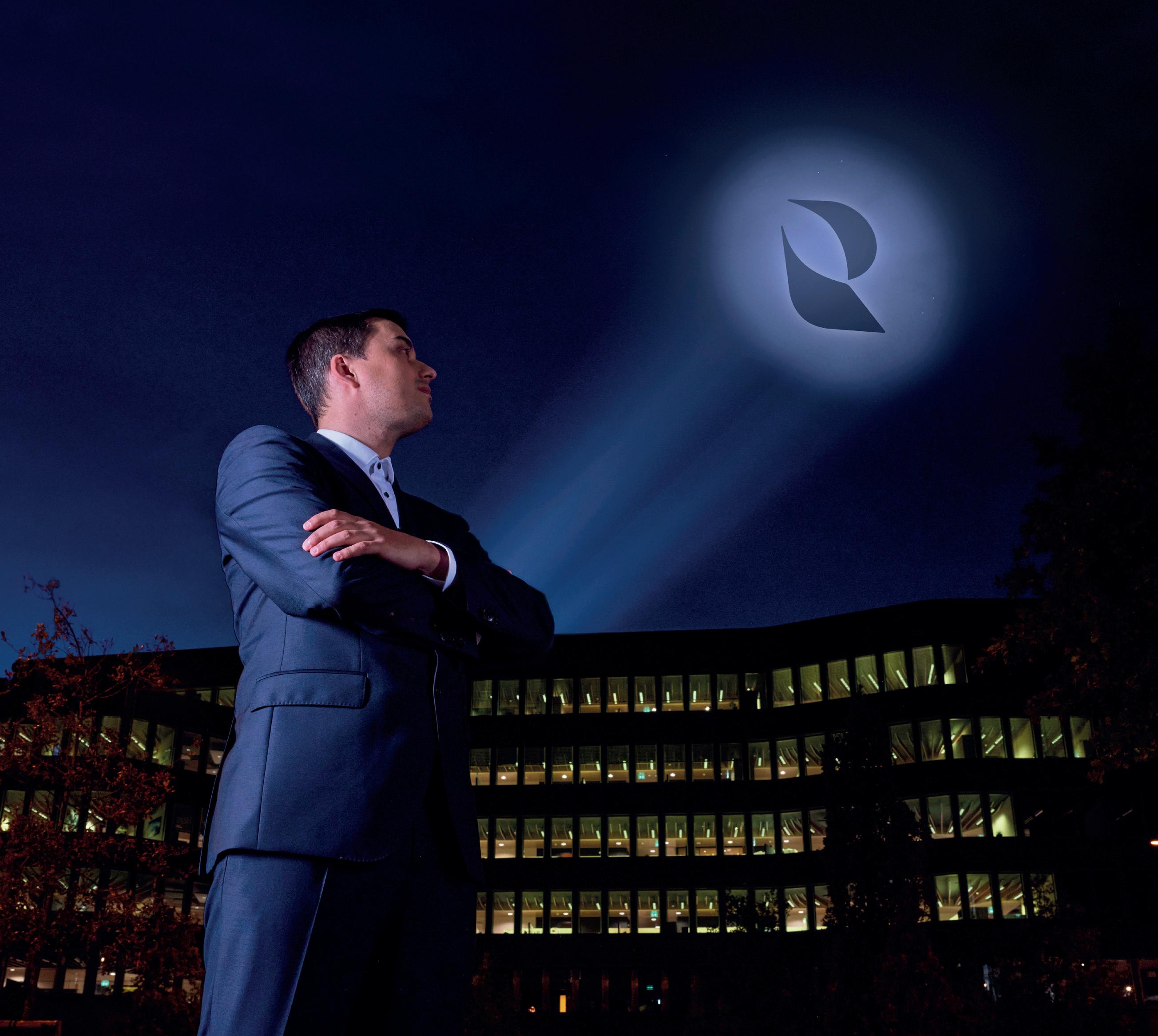
Meet our super advisors who are
traditional
and insurance.
Contact them to make
will
project
new Hub of Home or in
advice and financing,